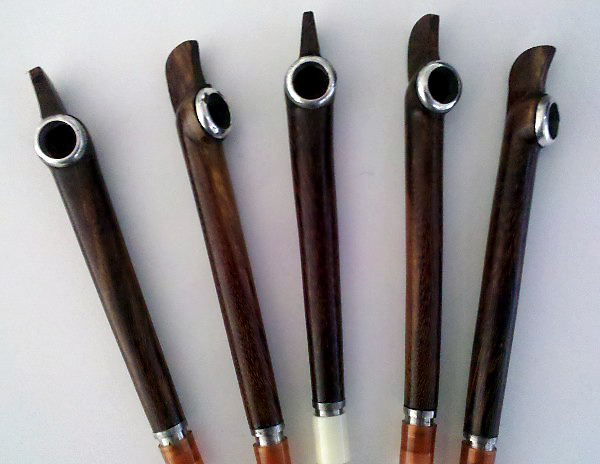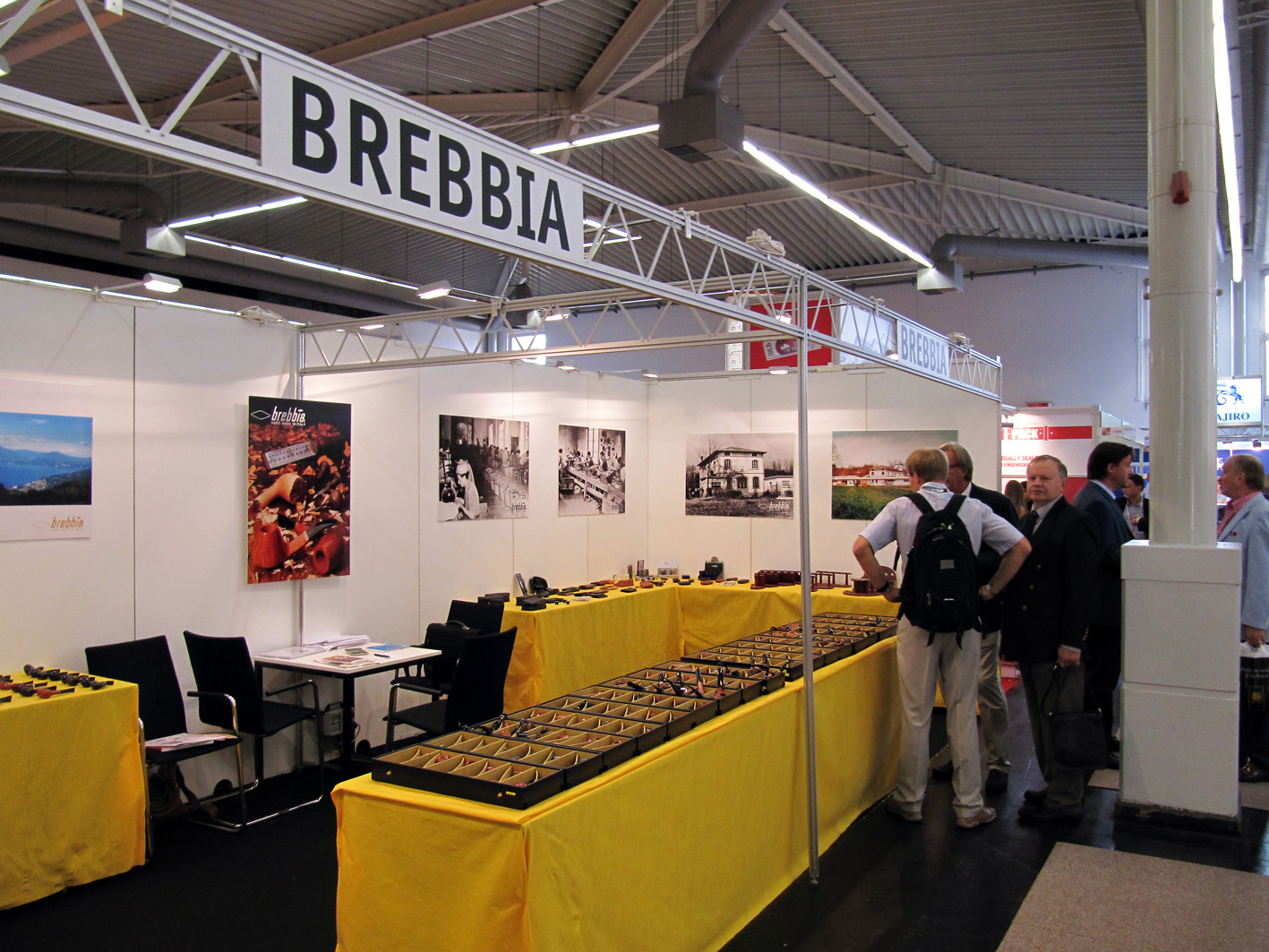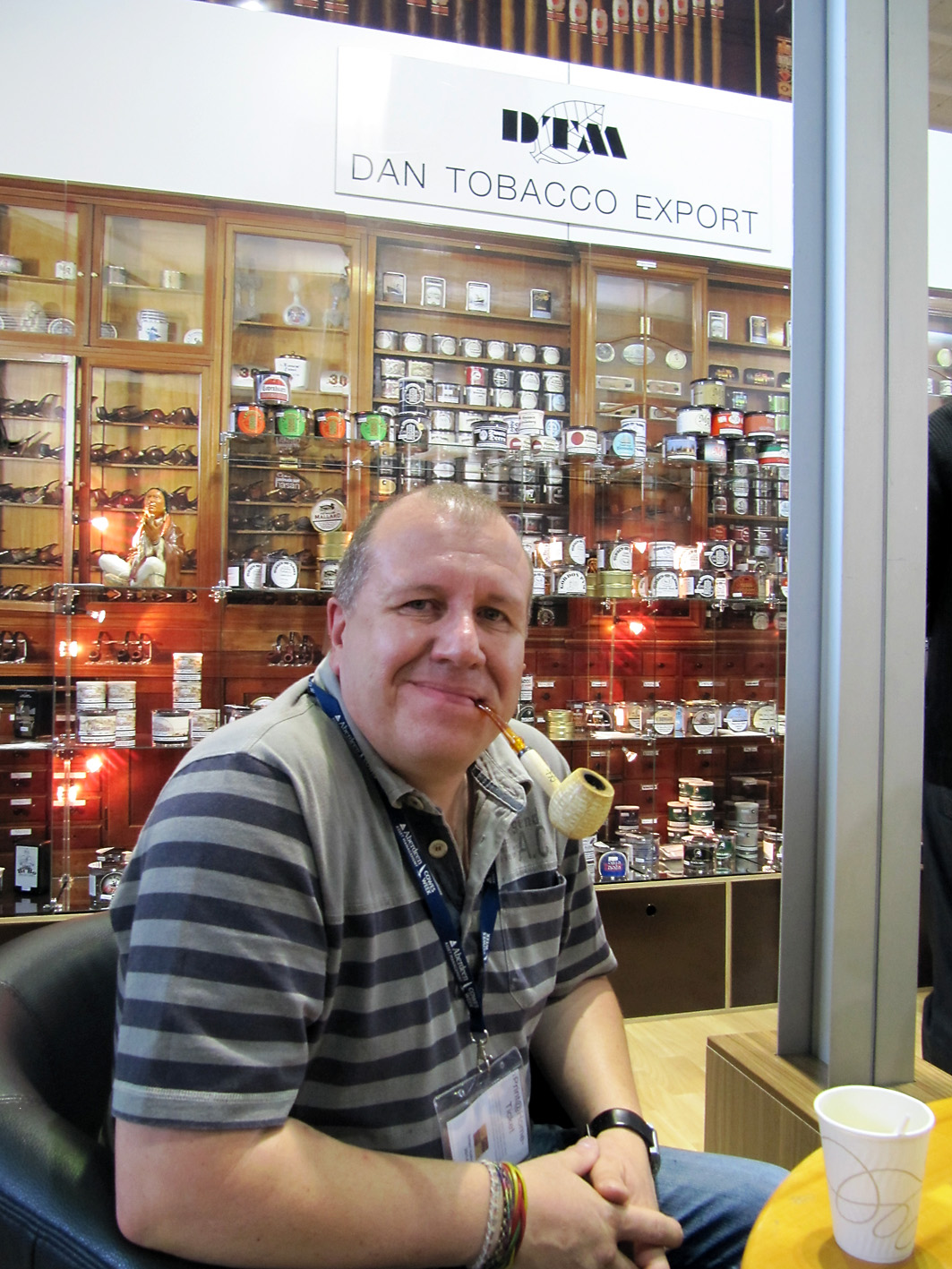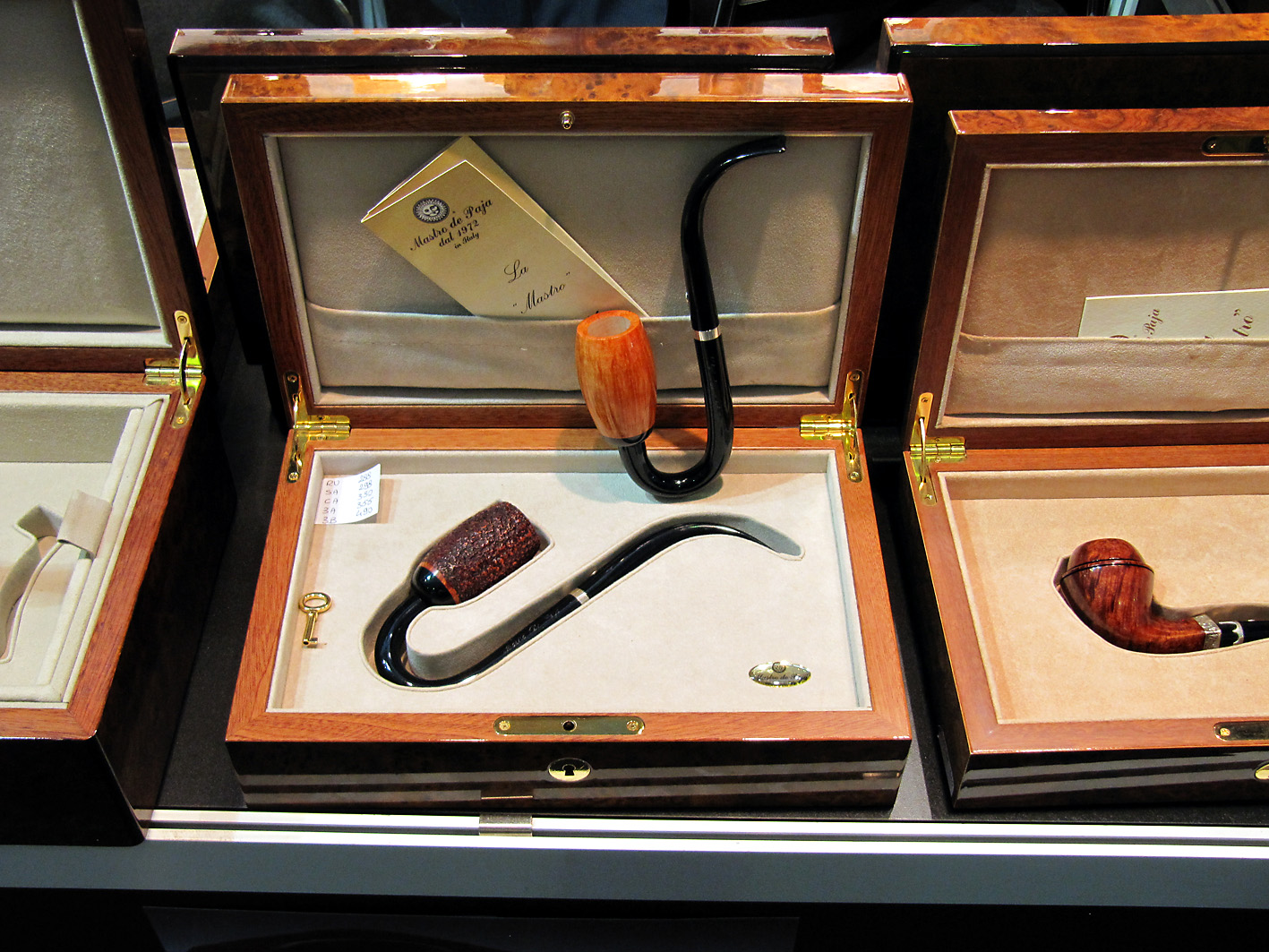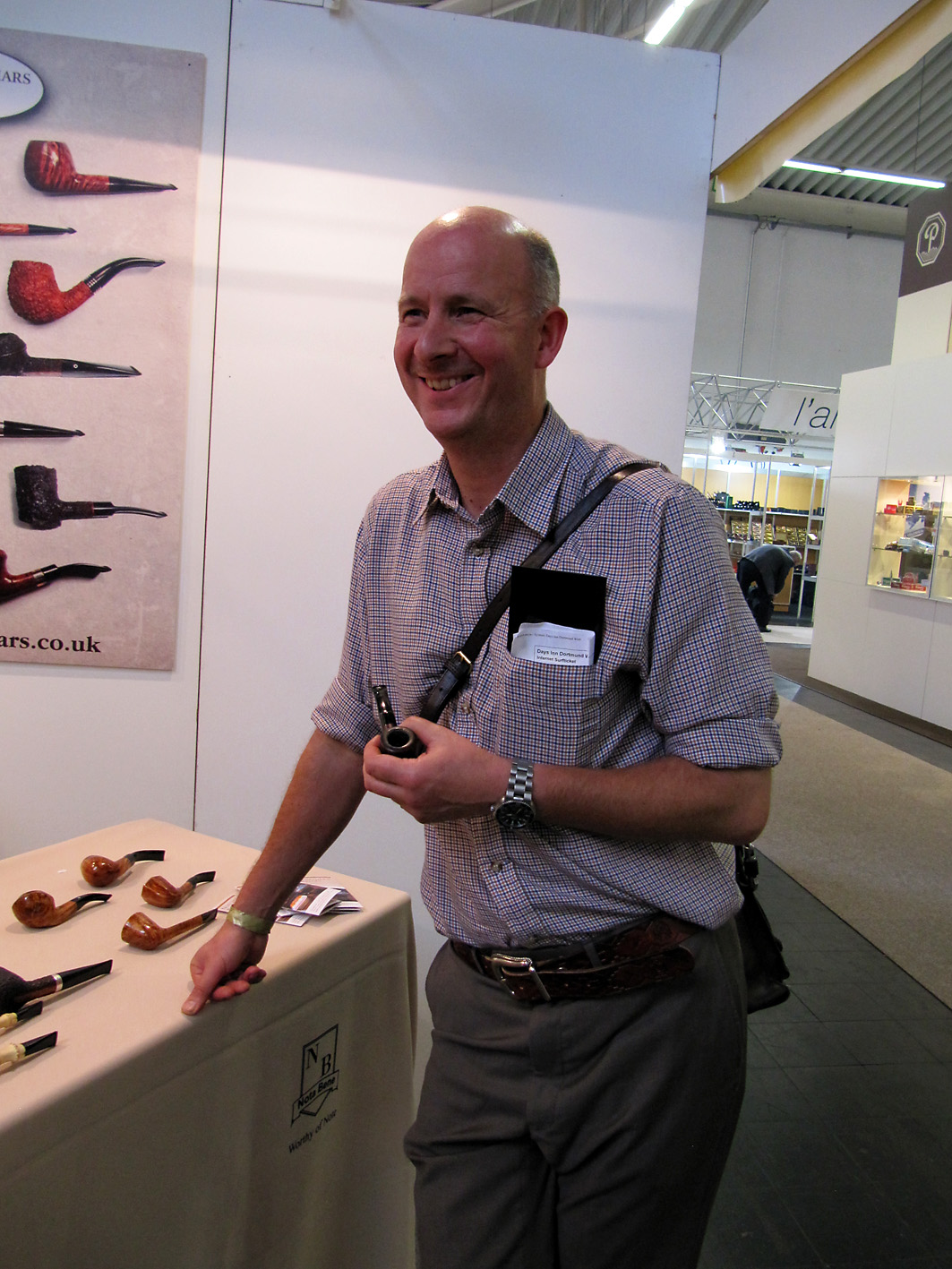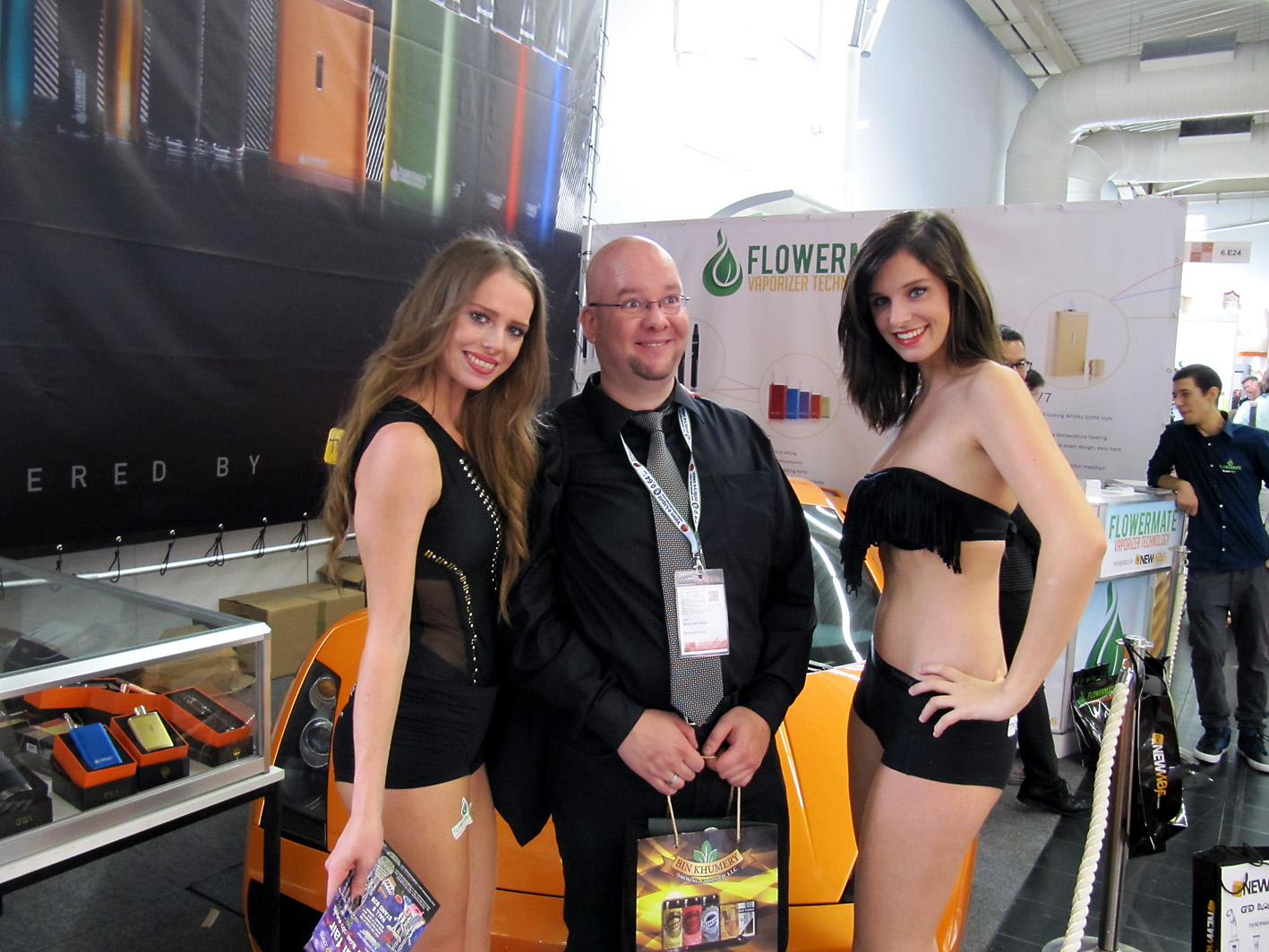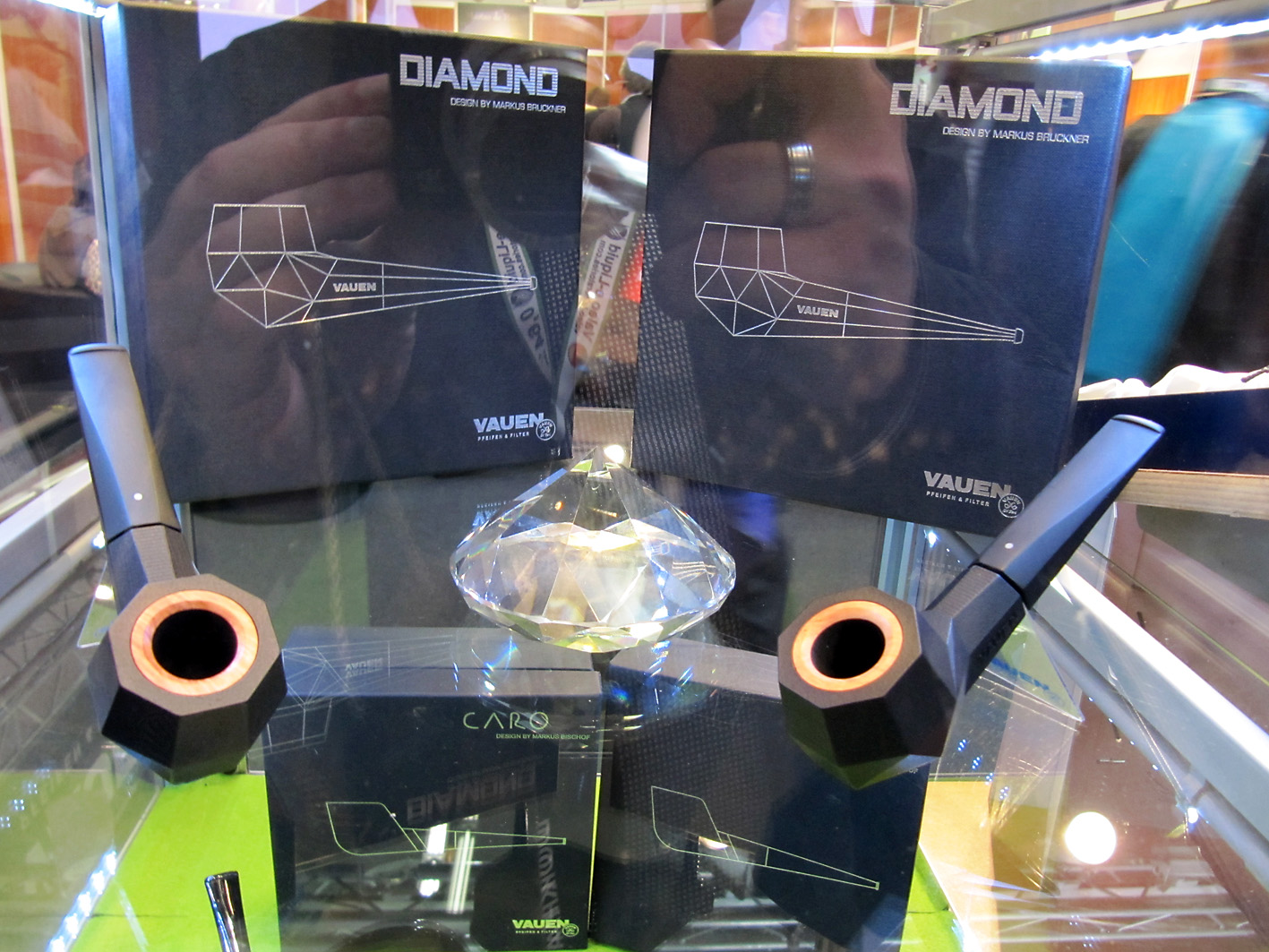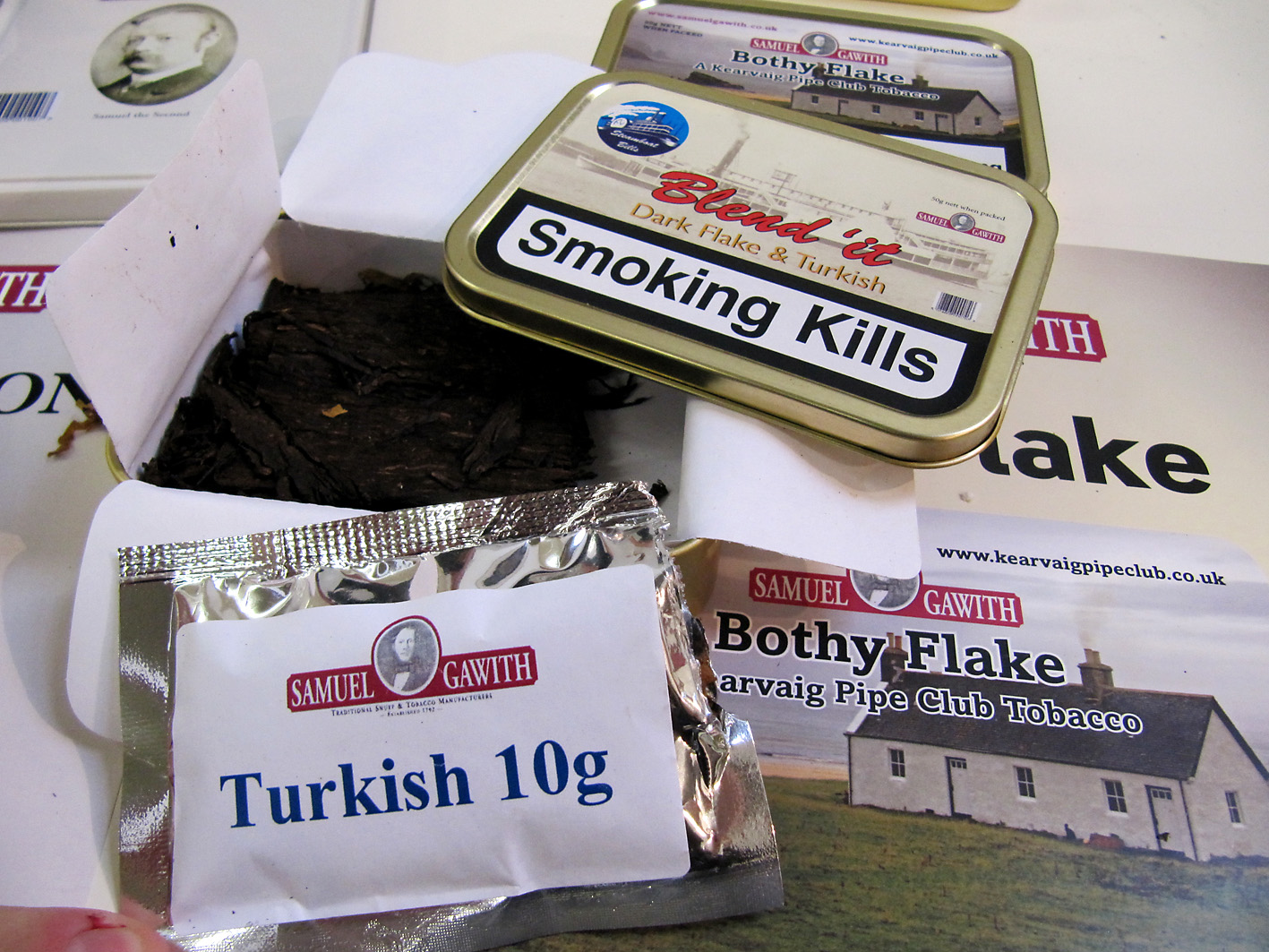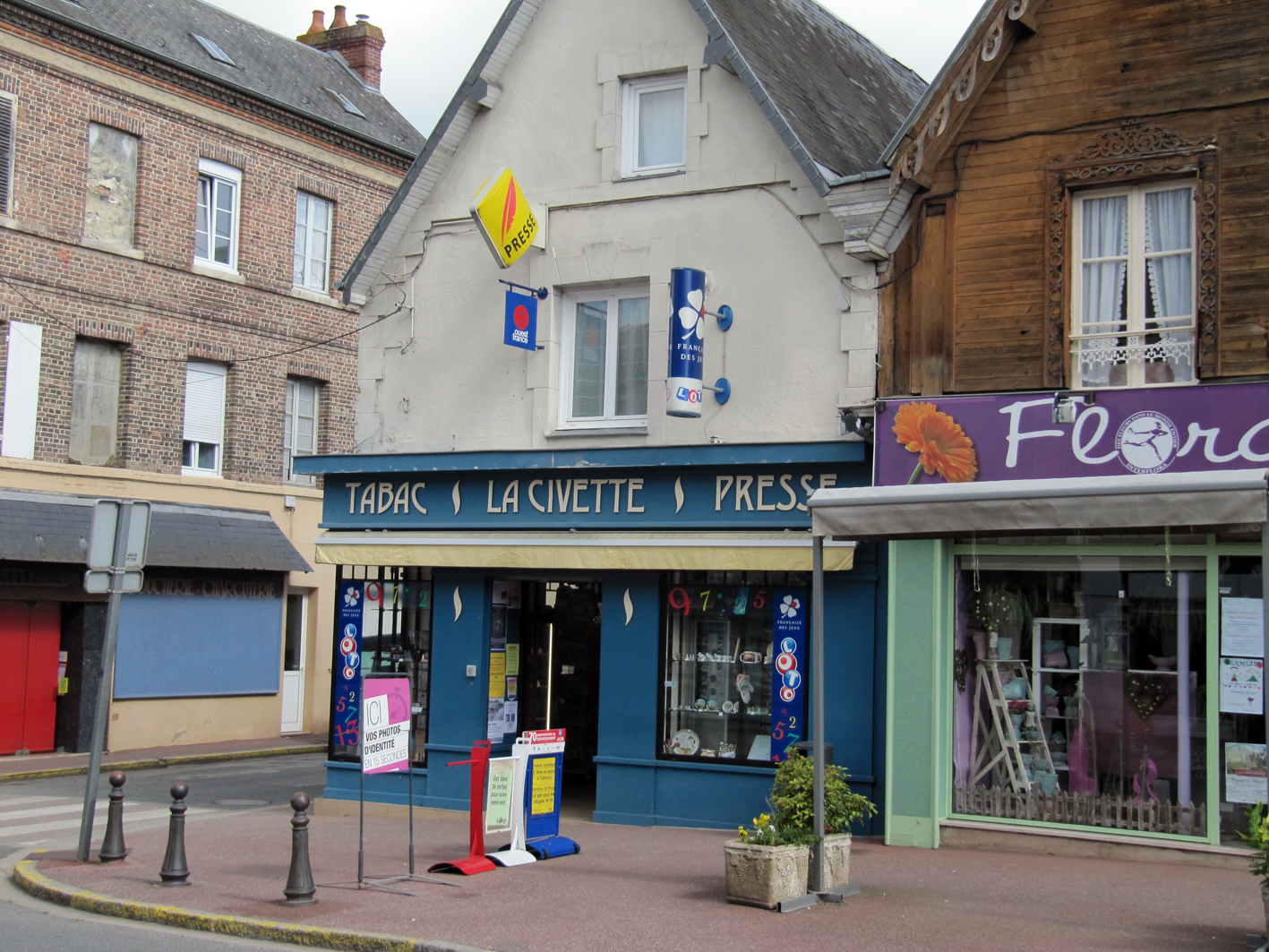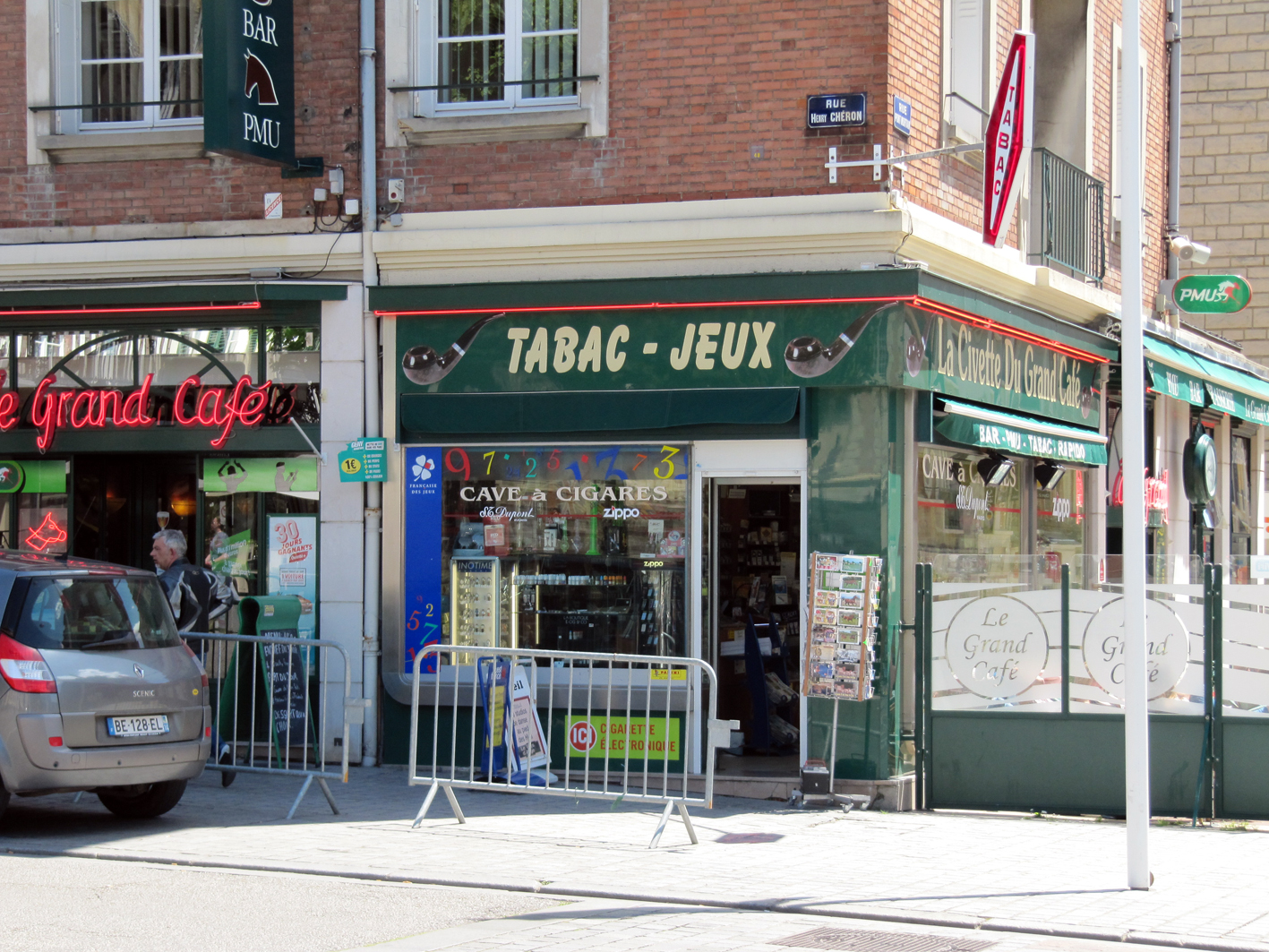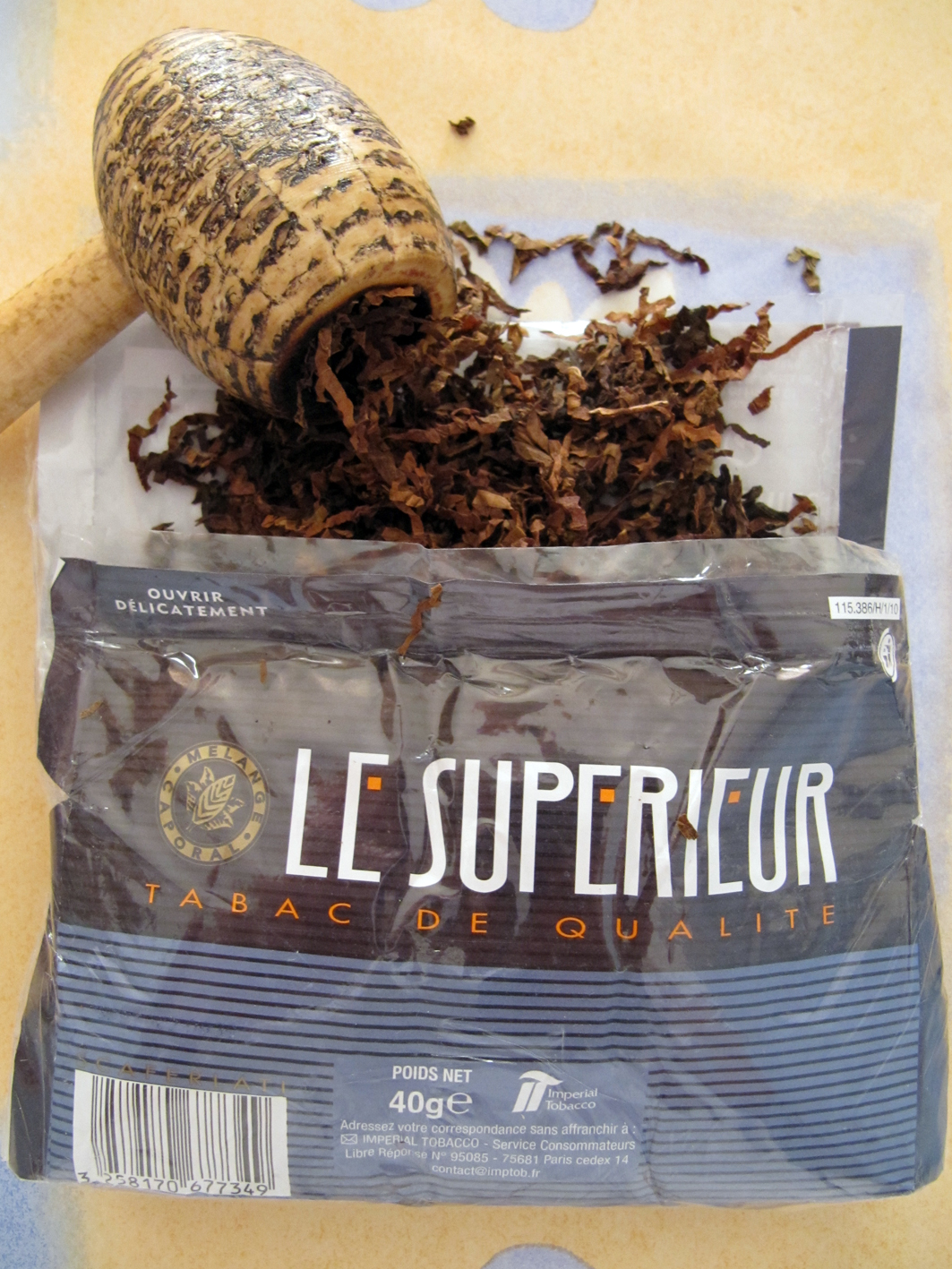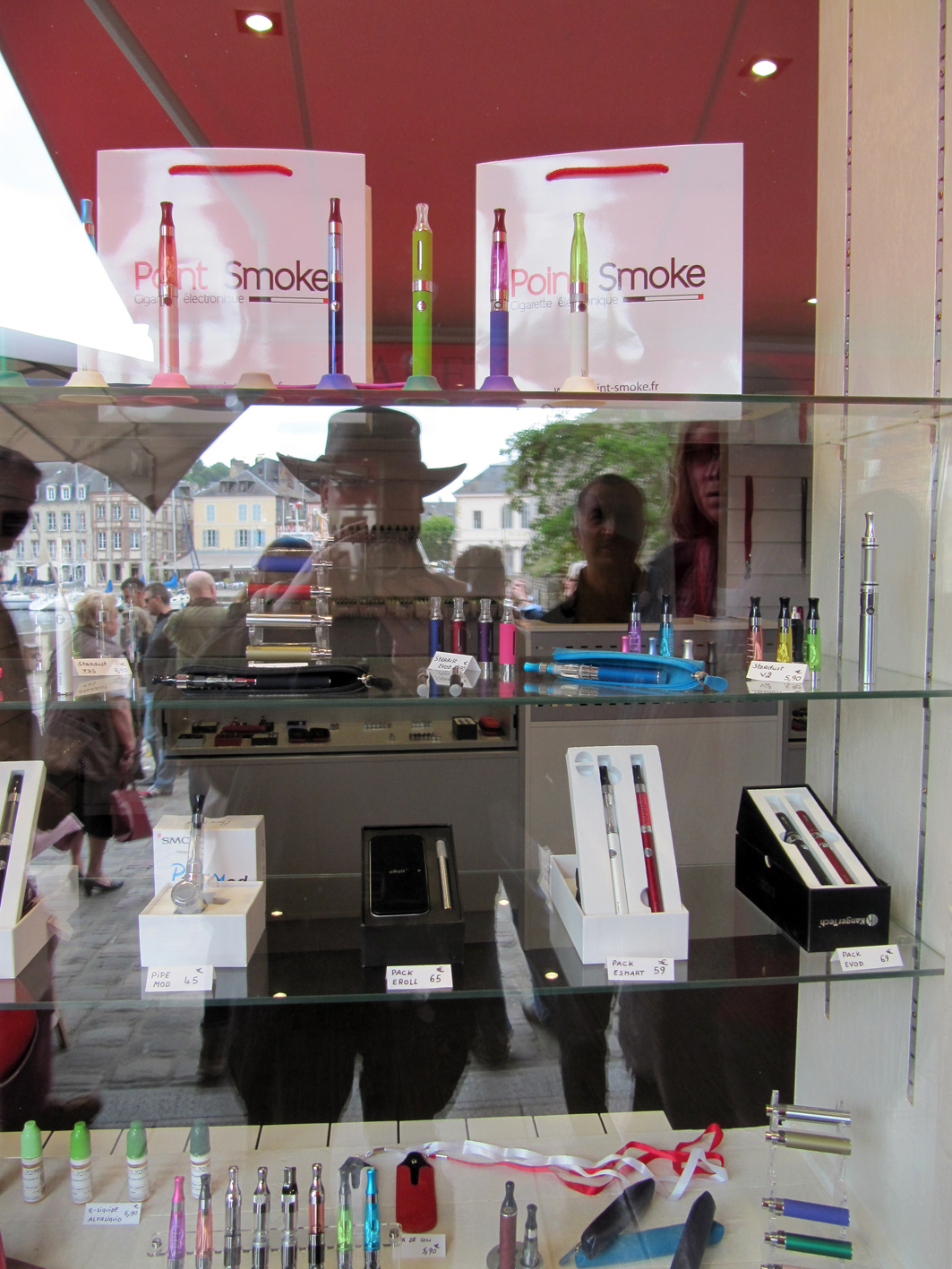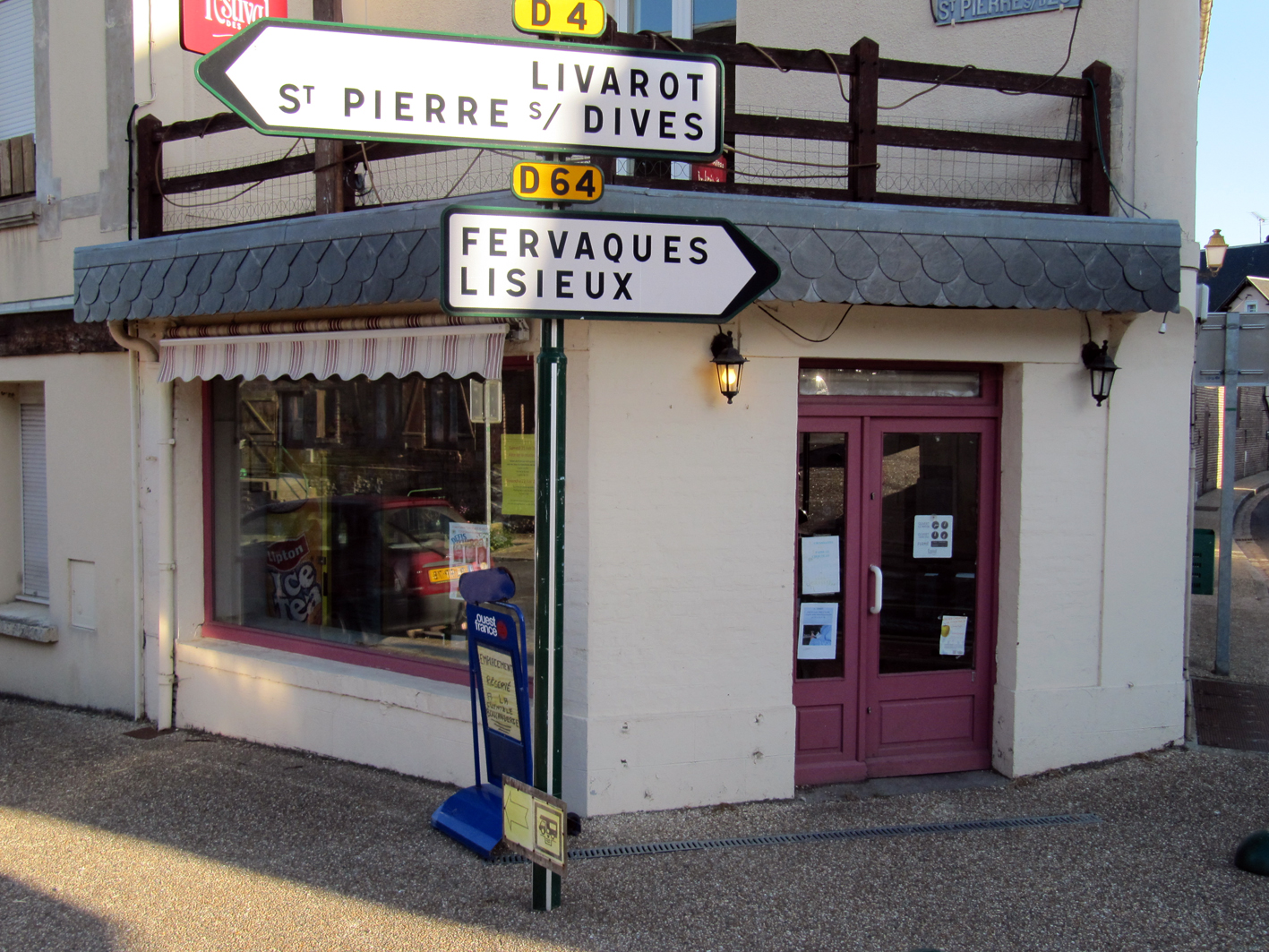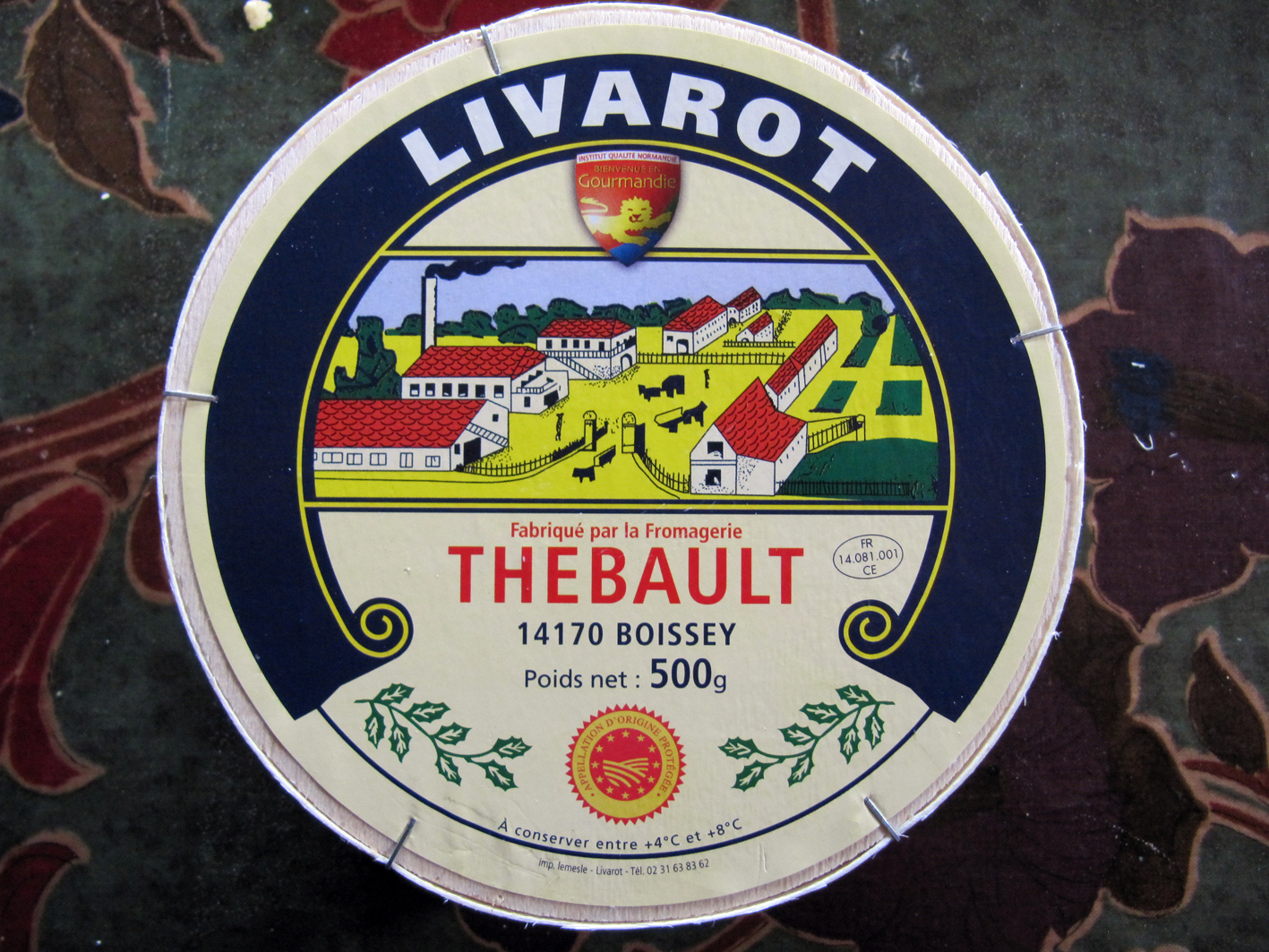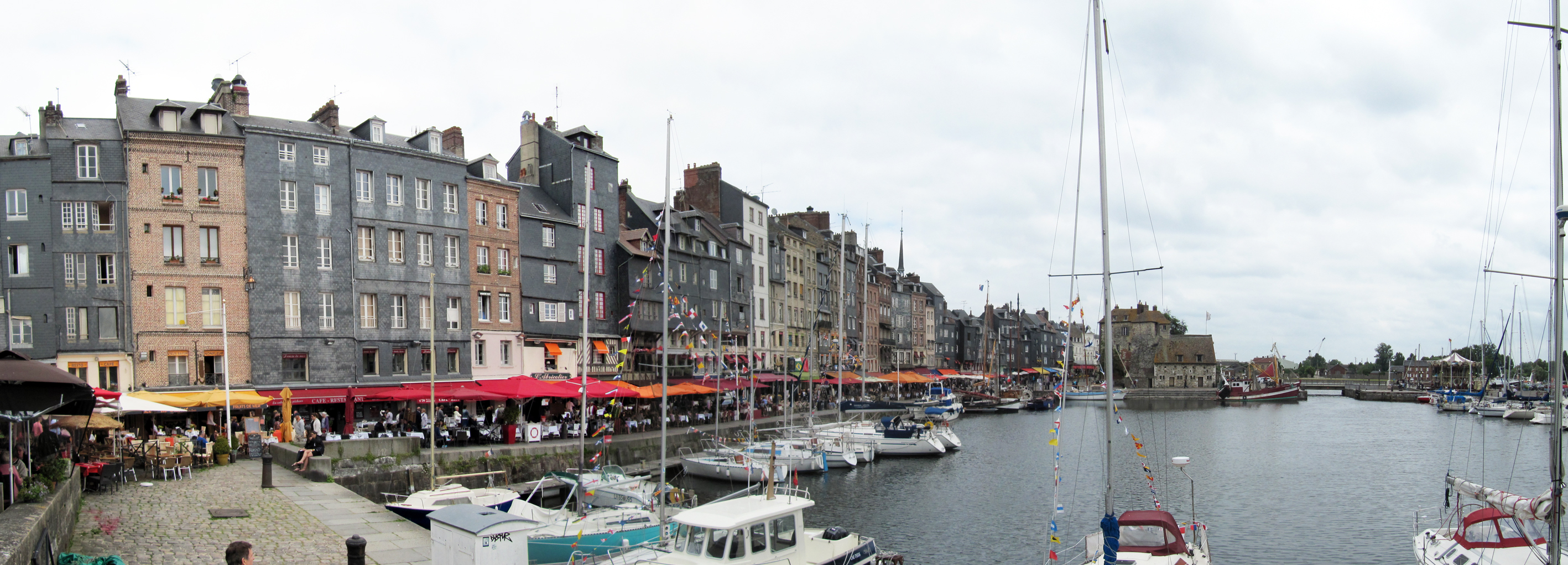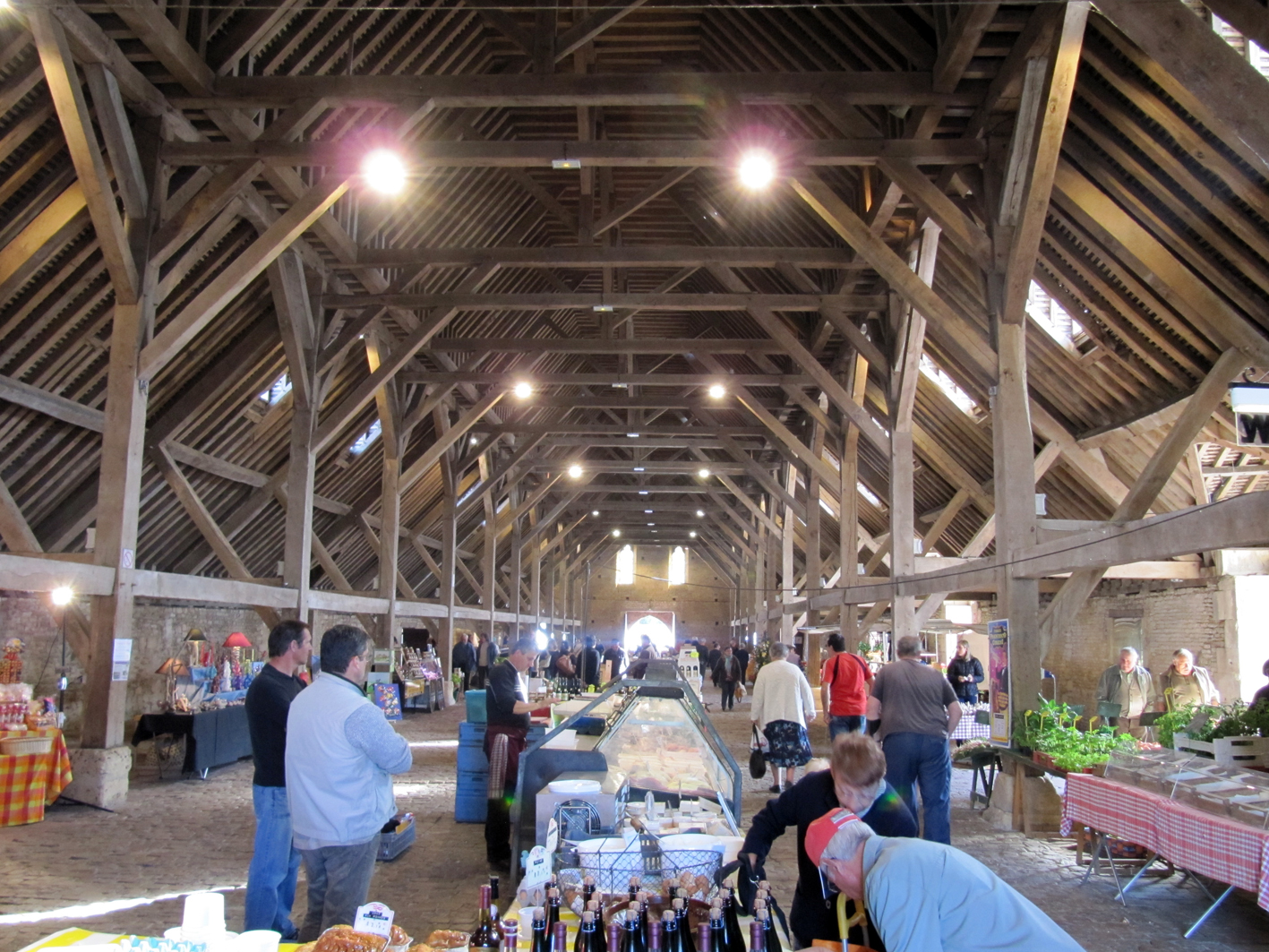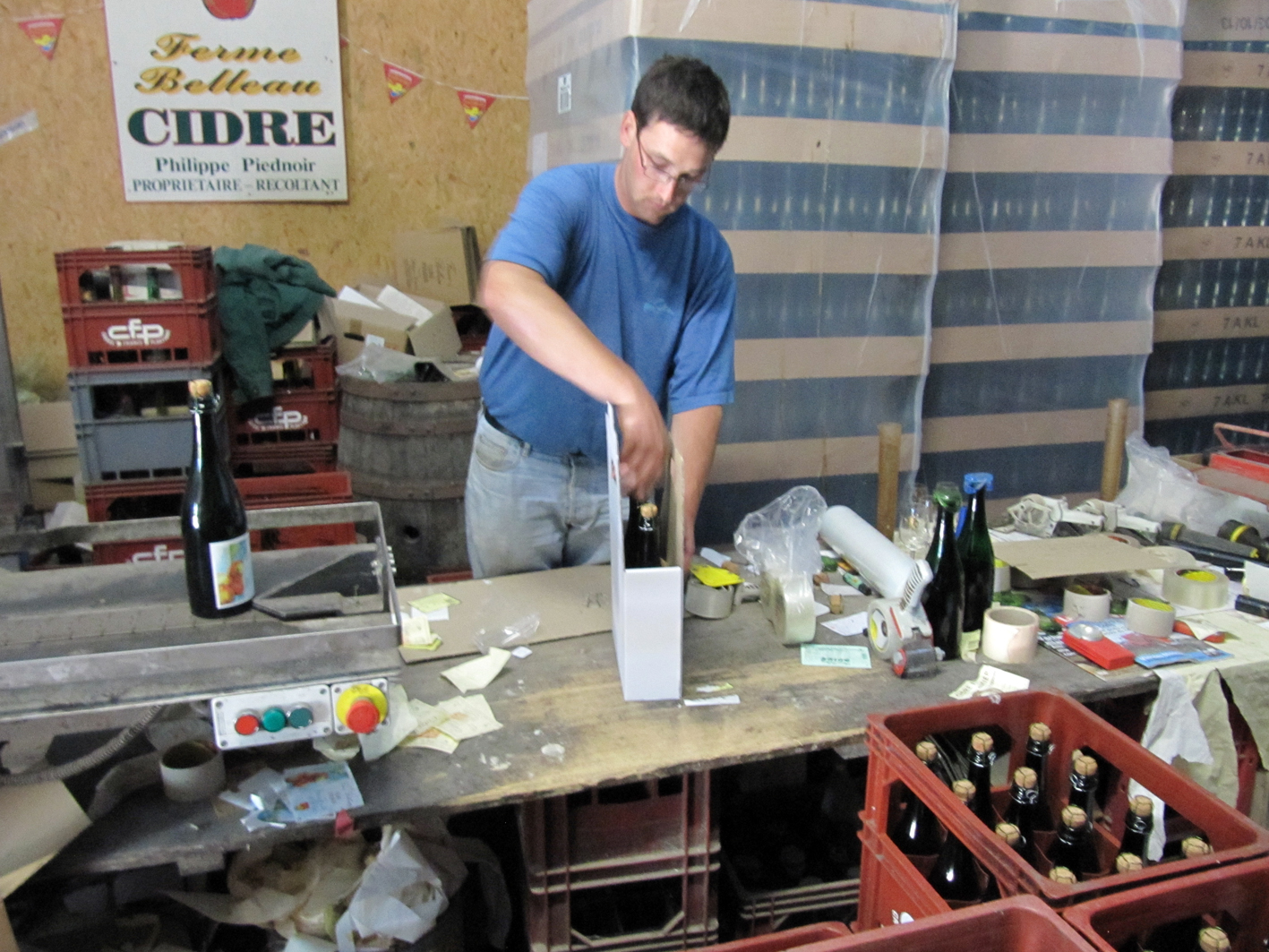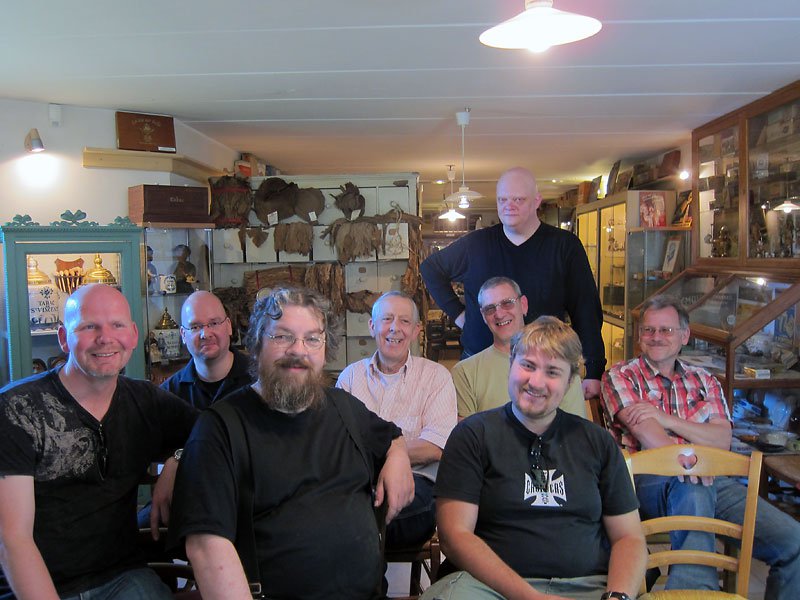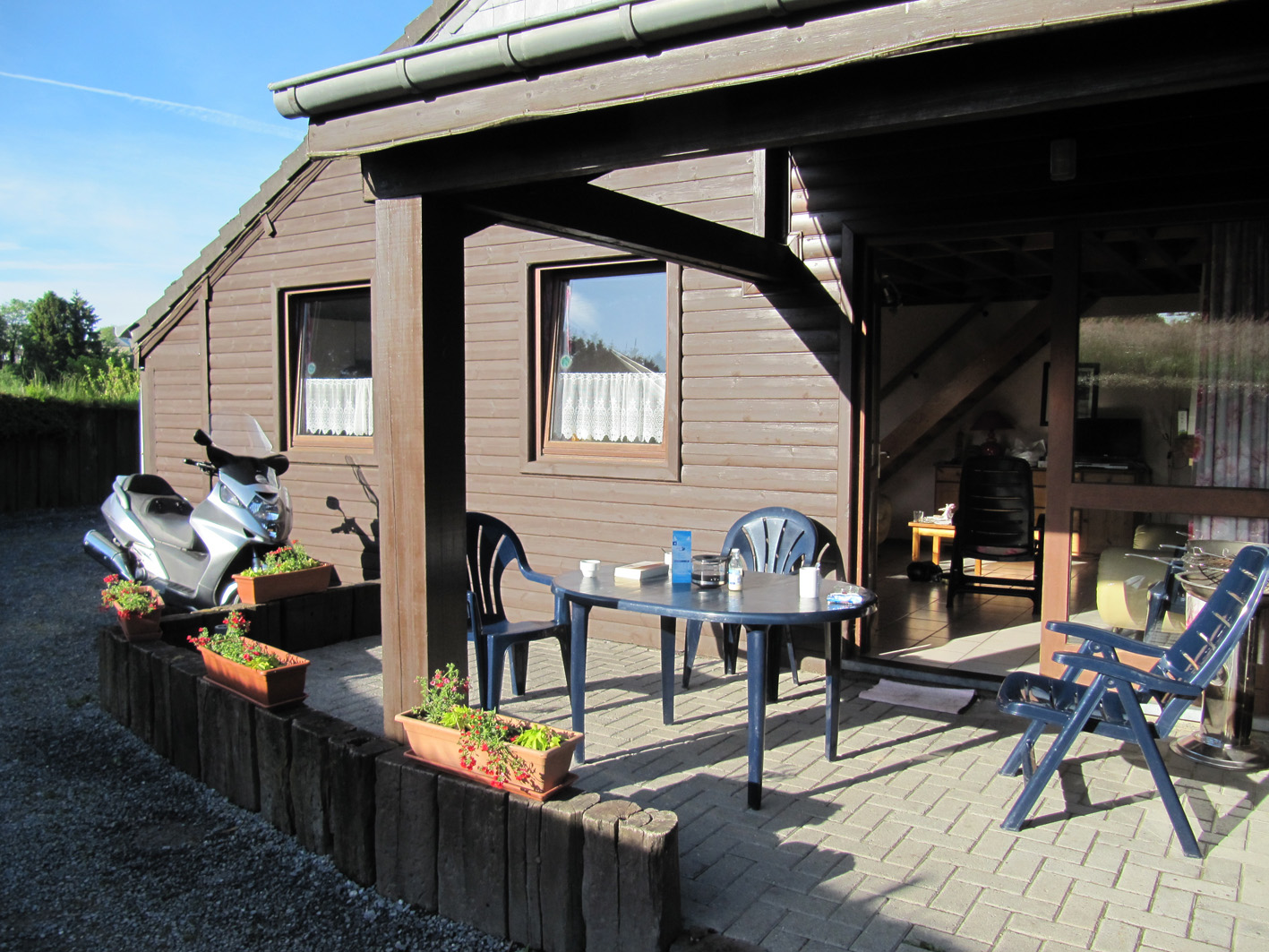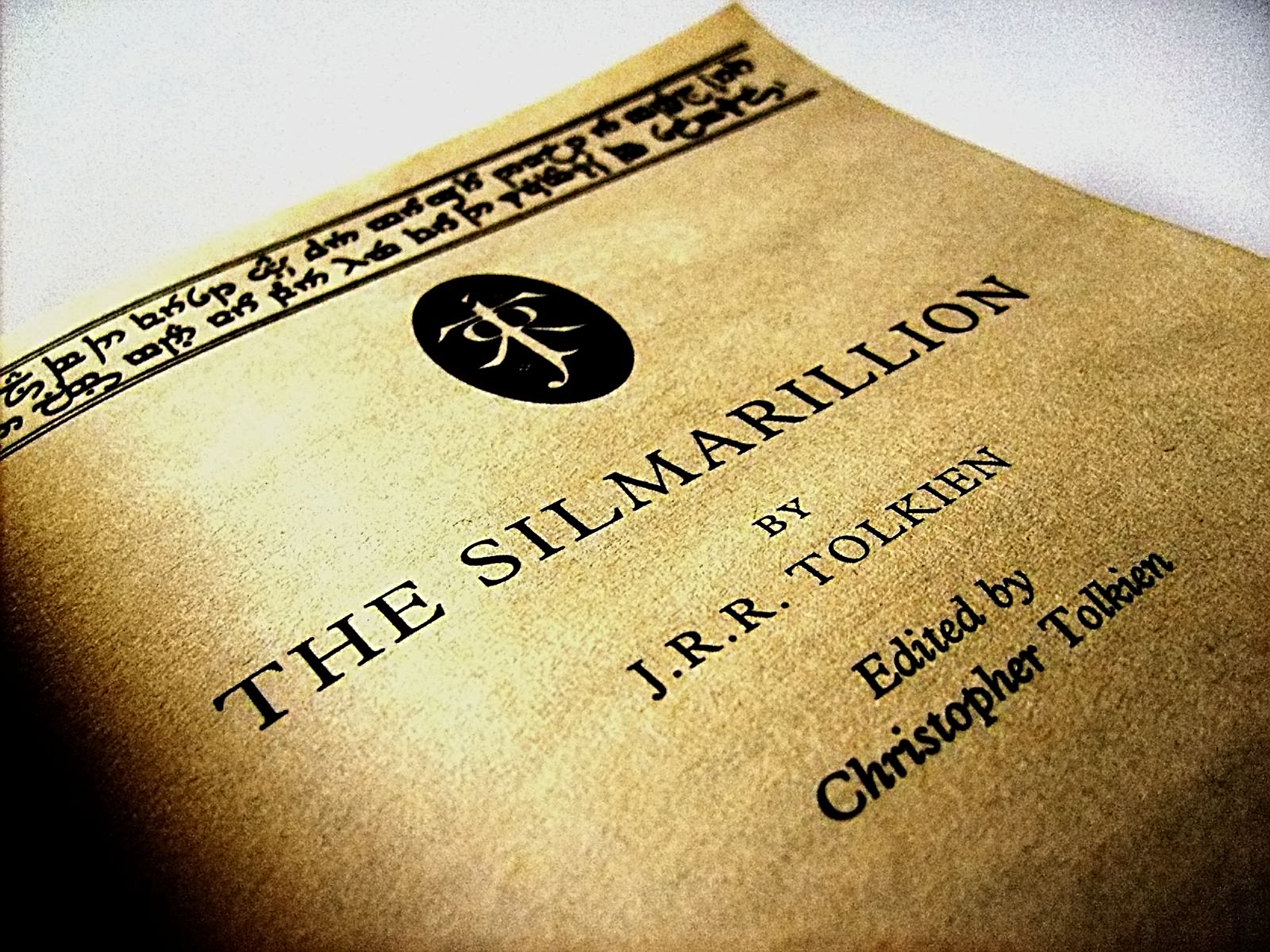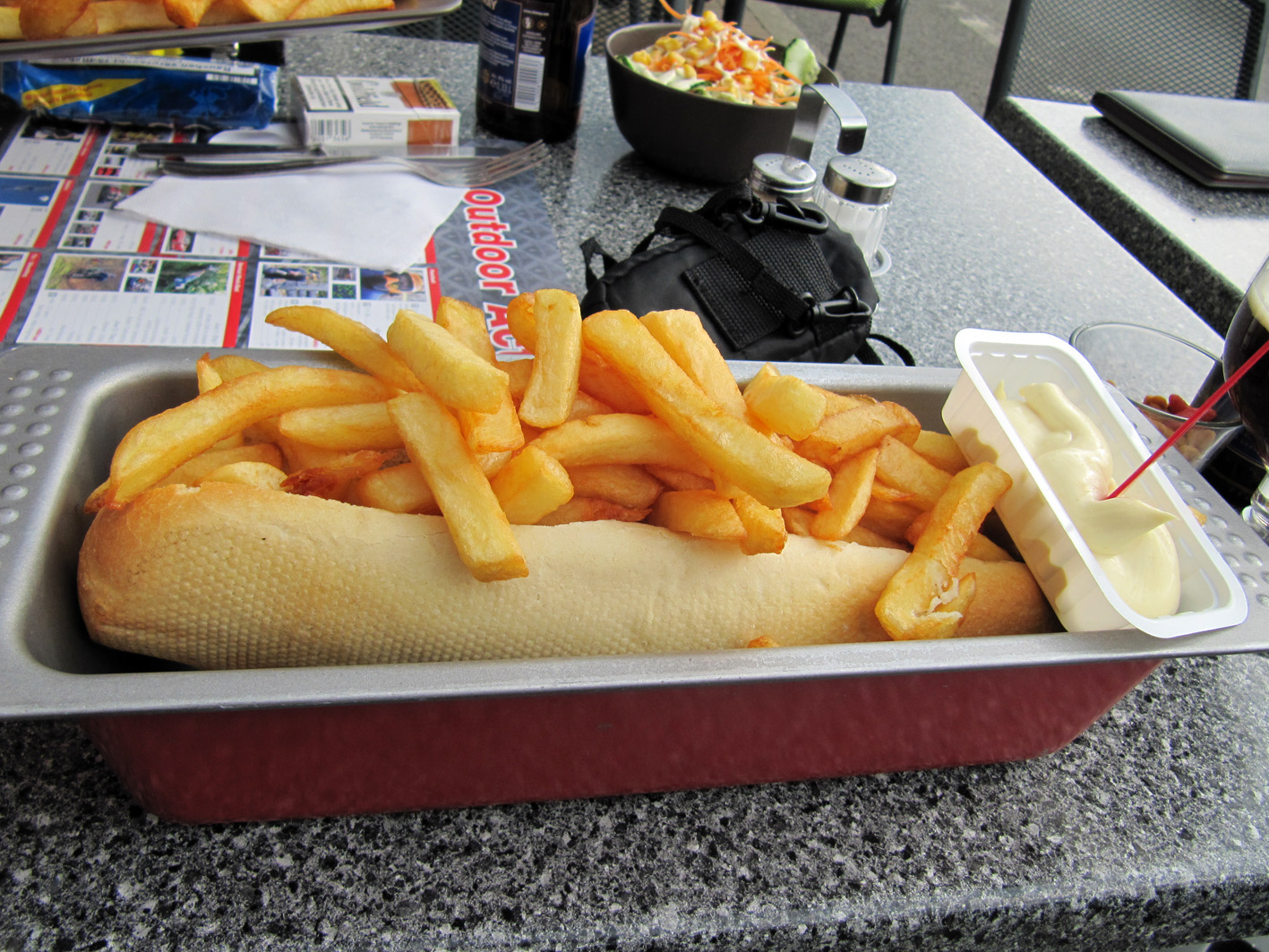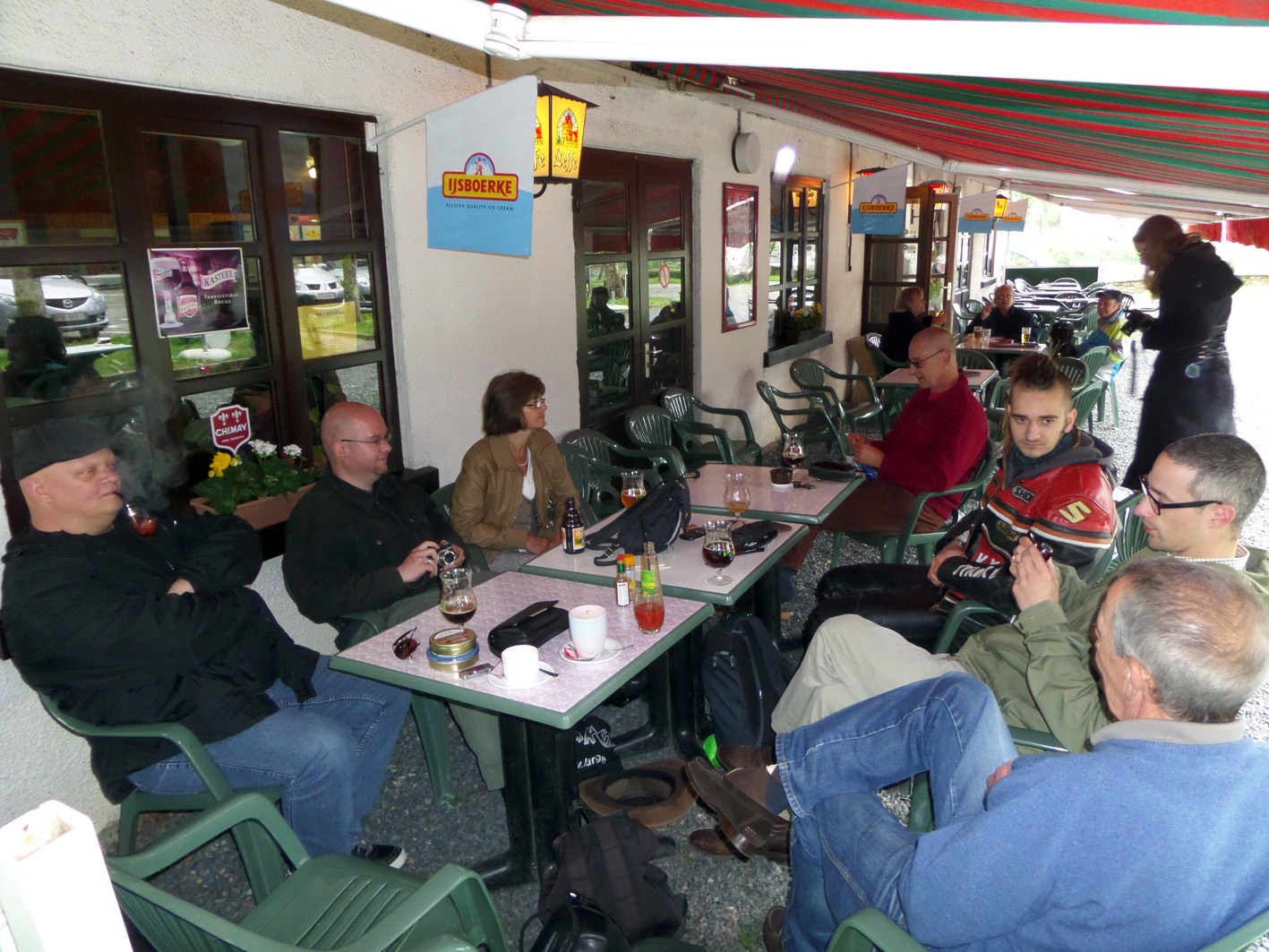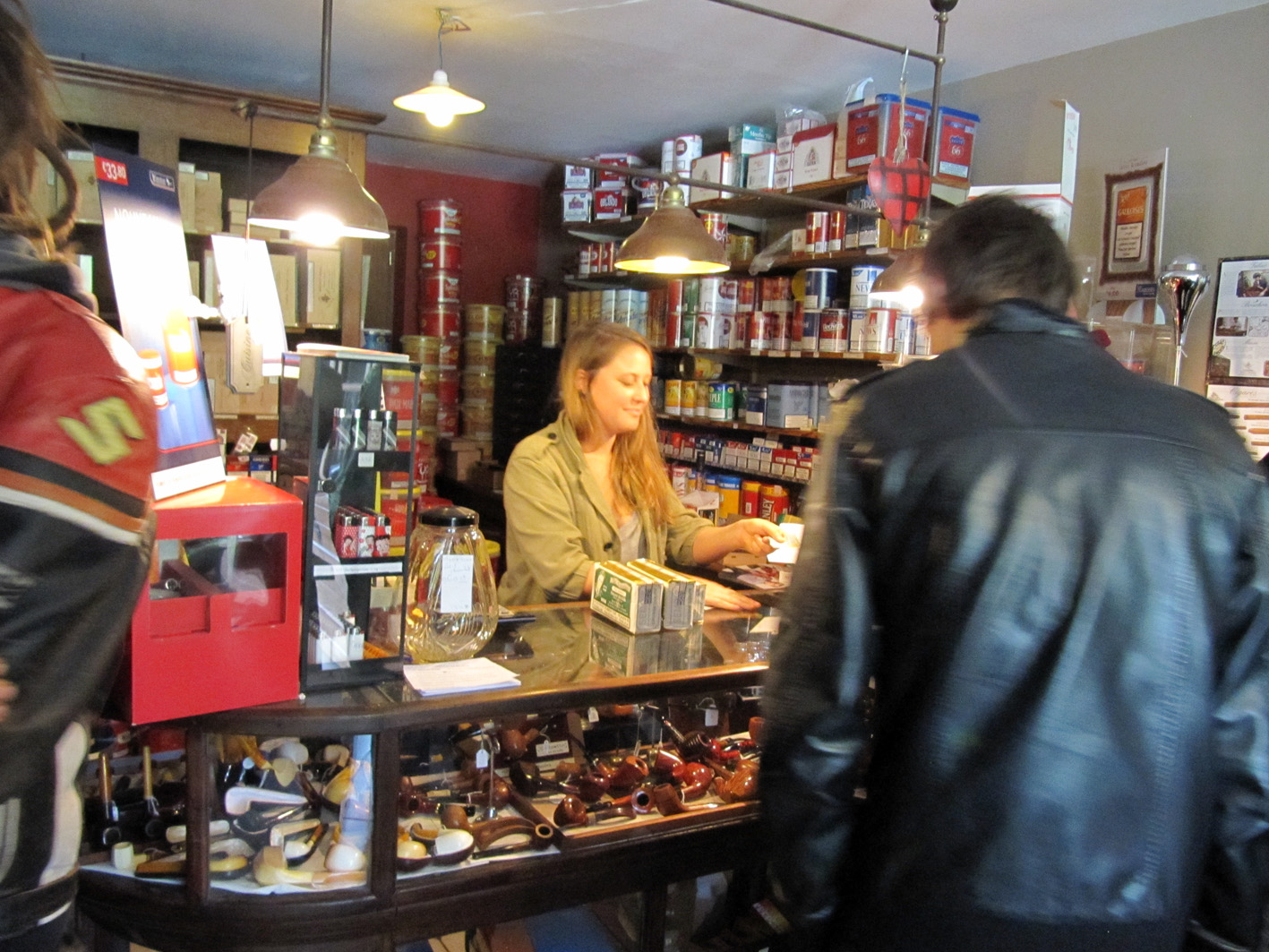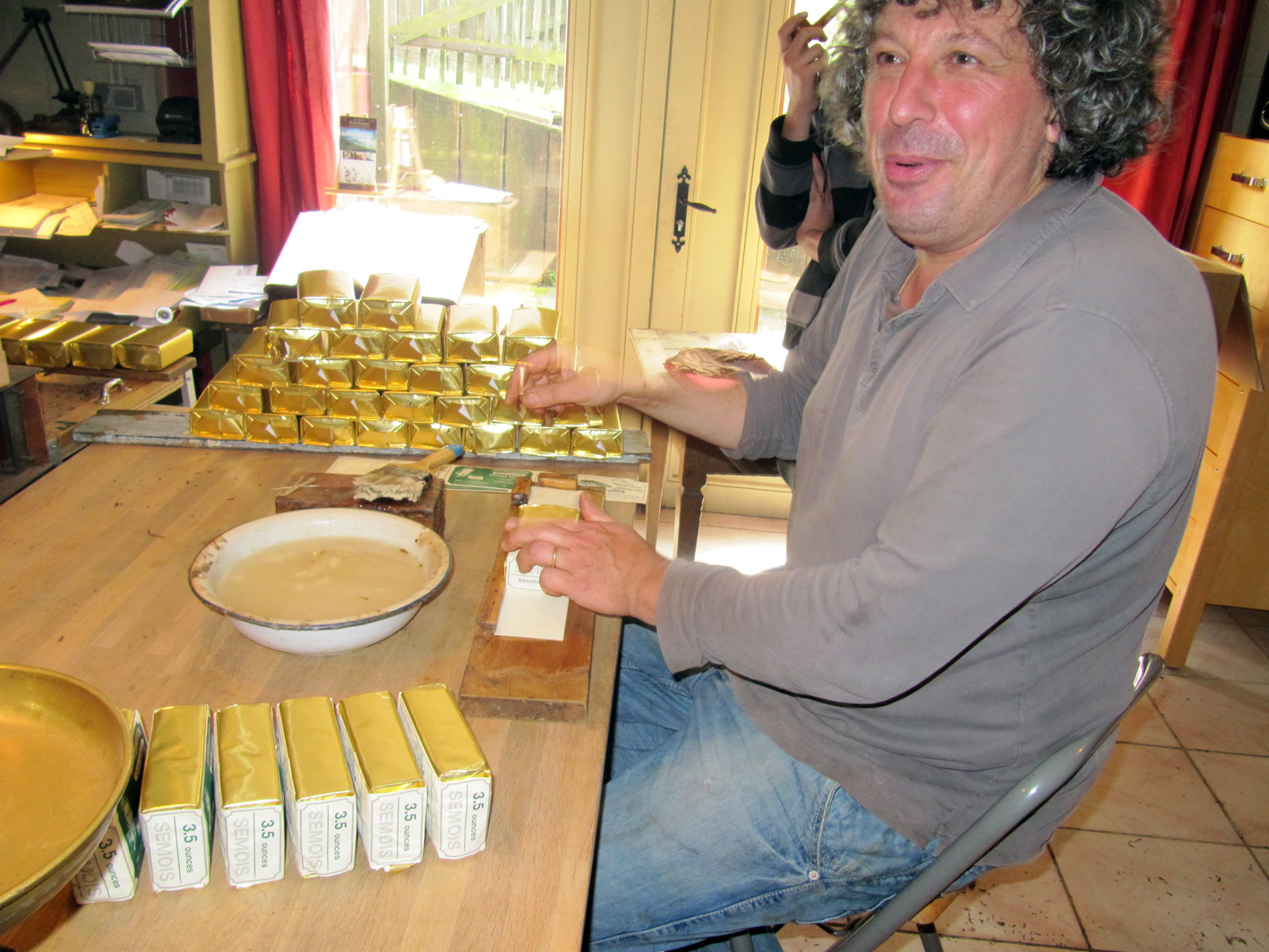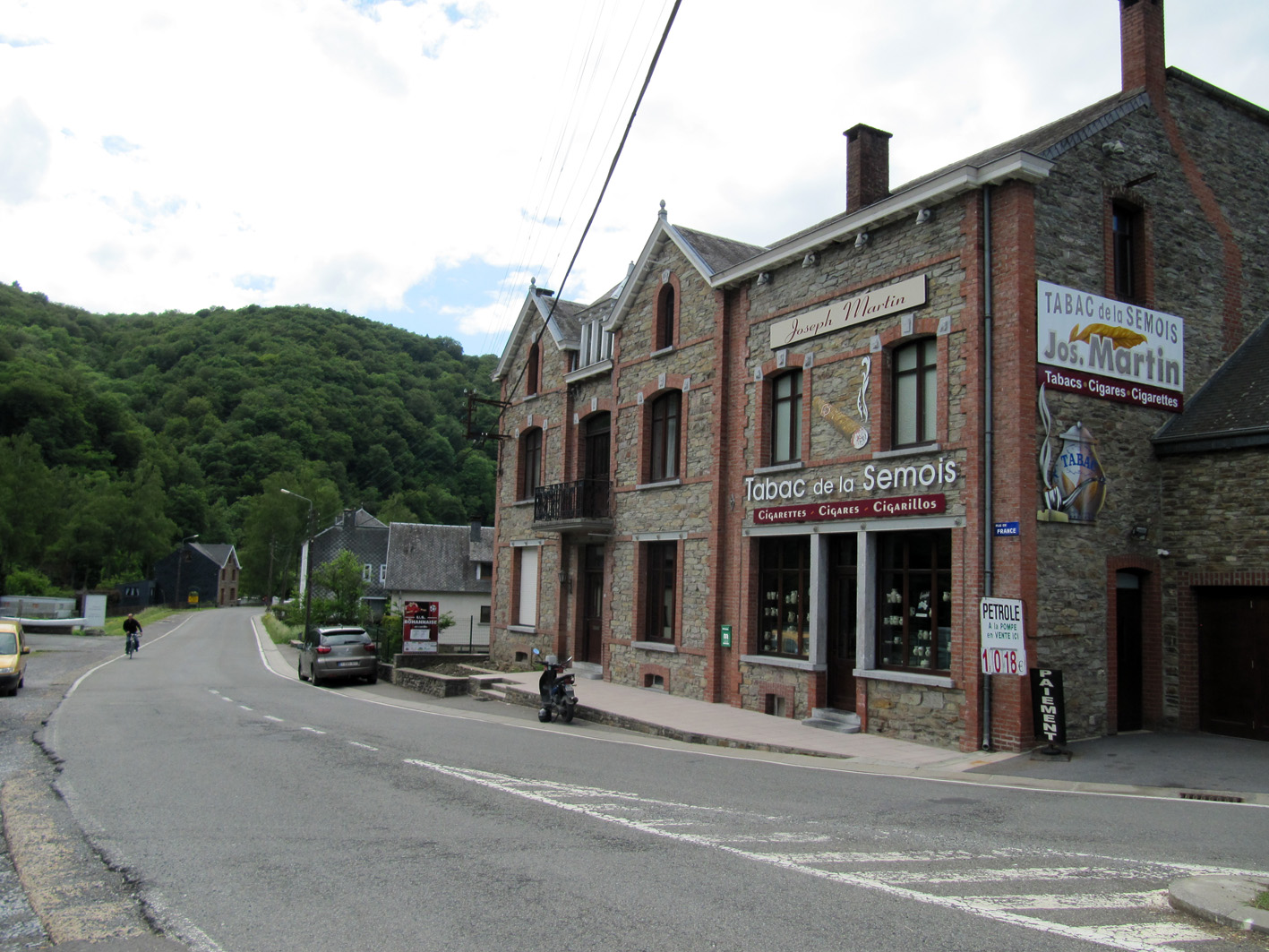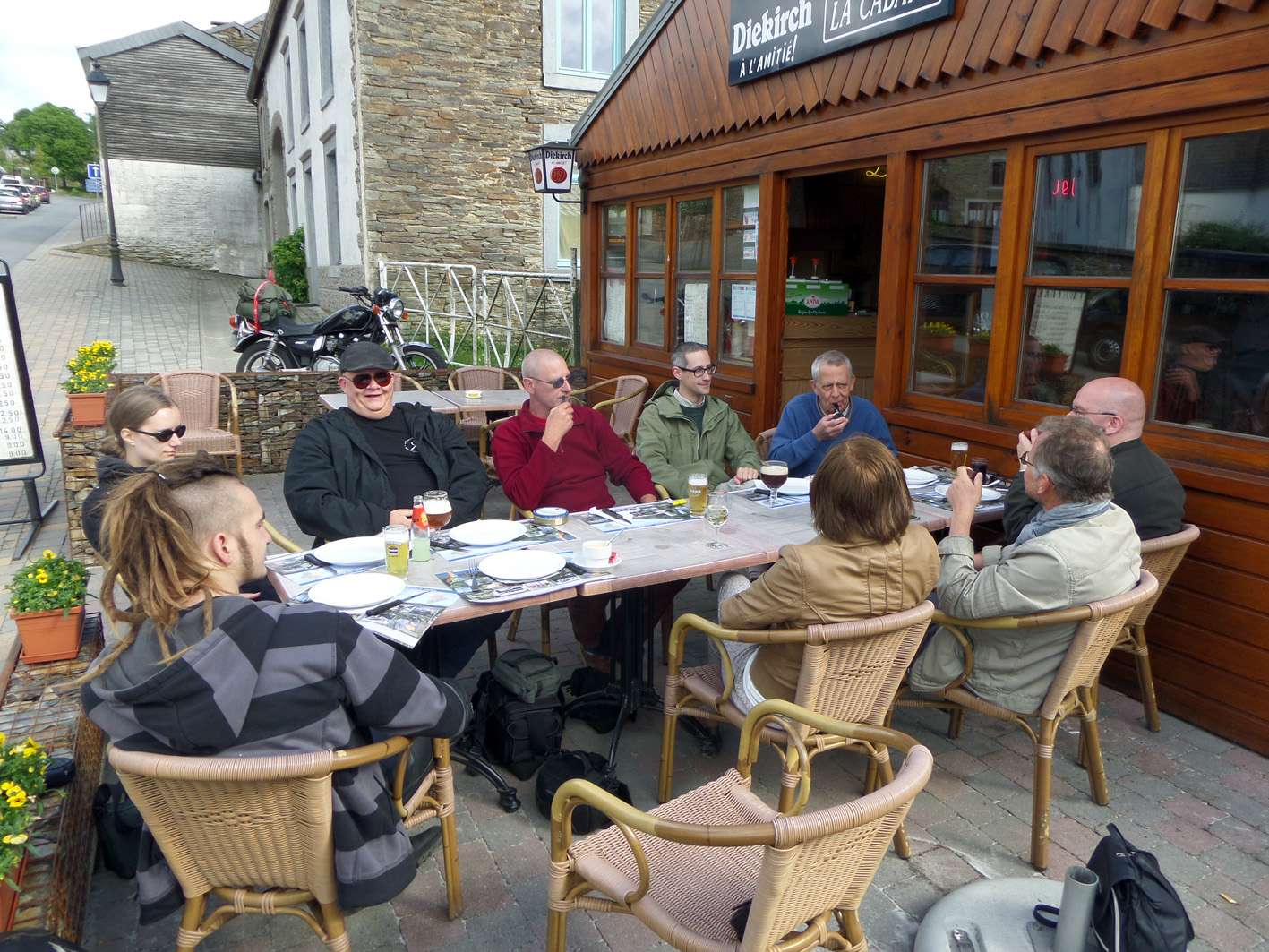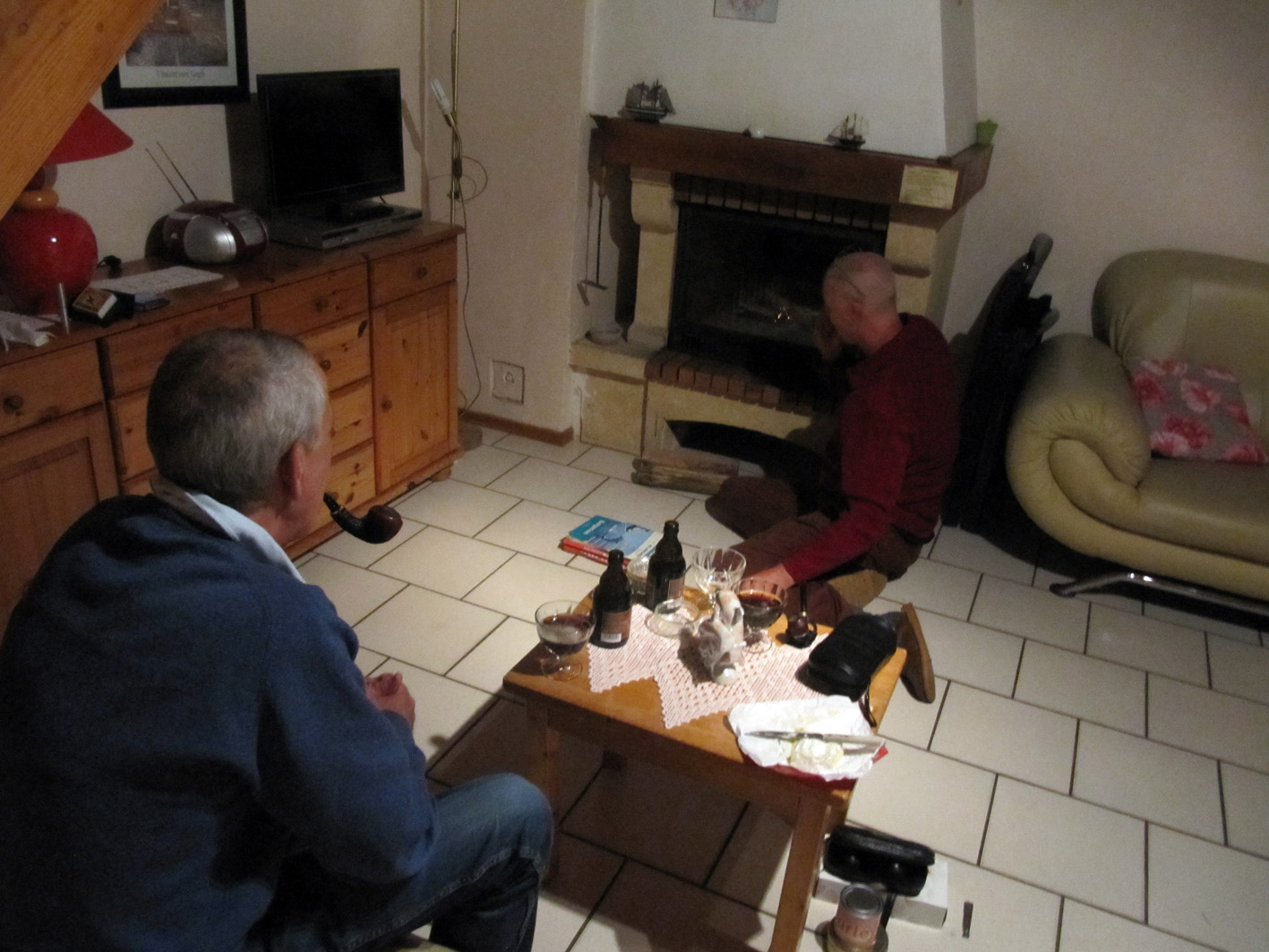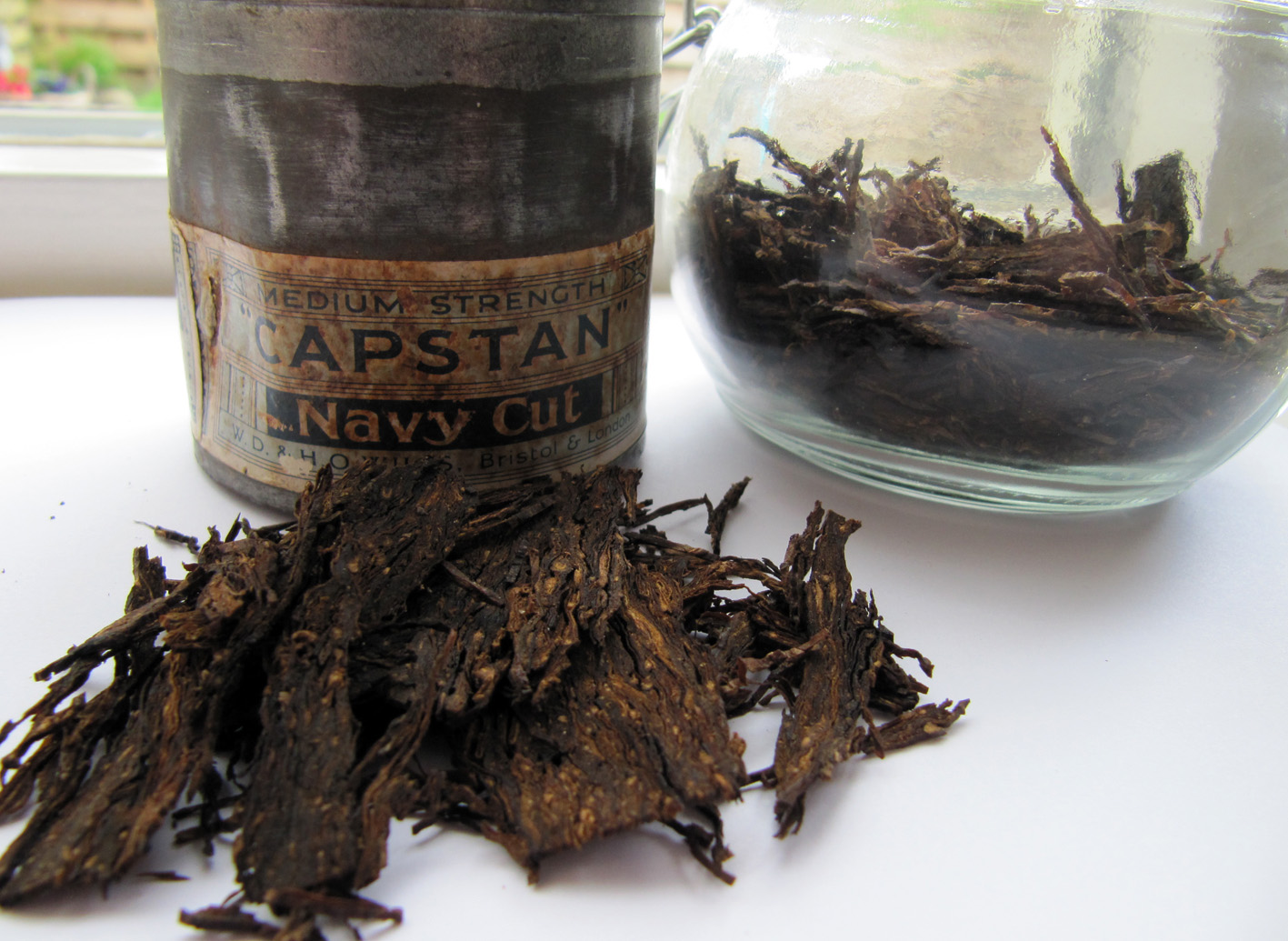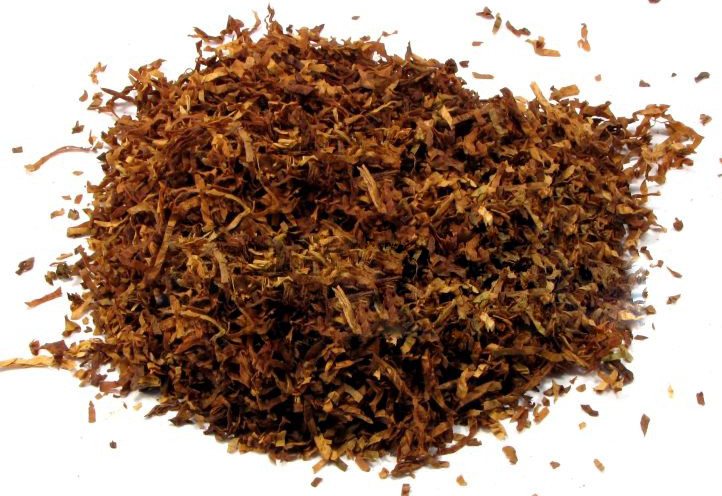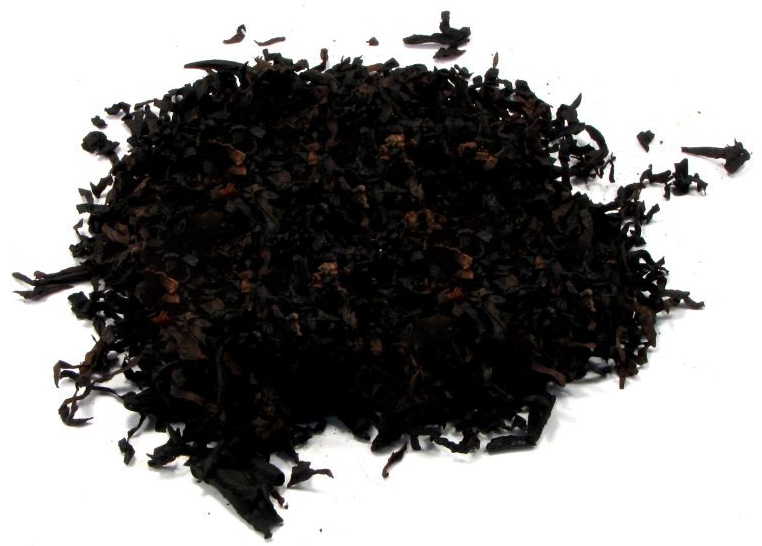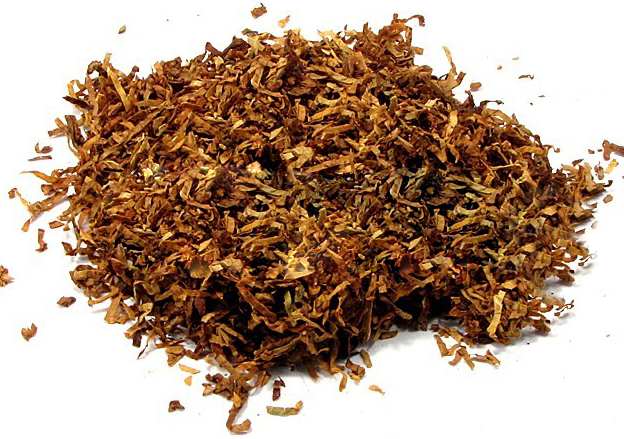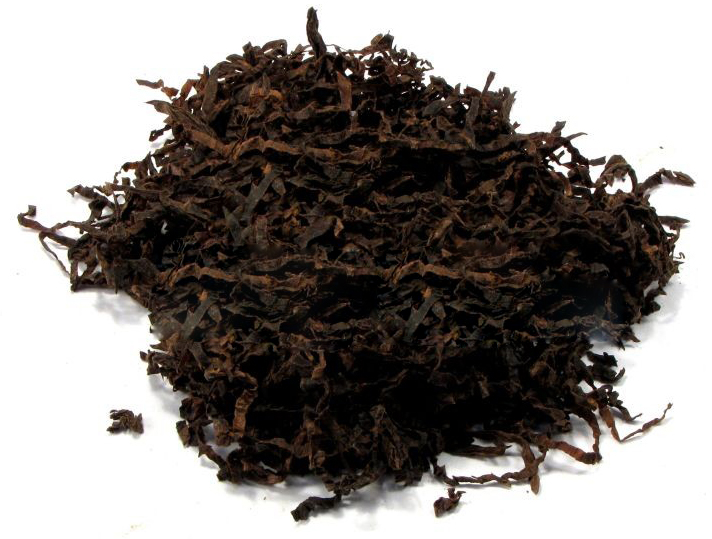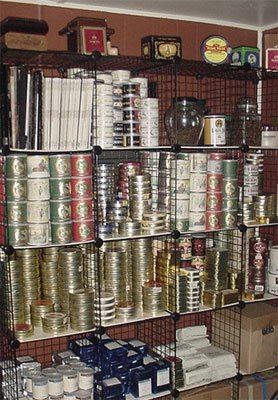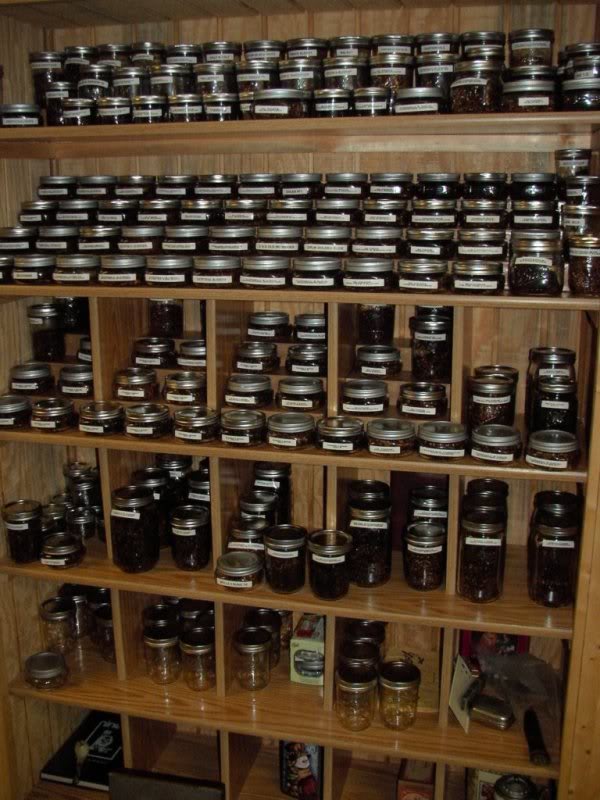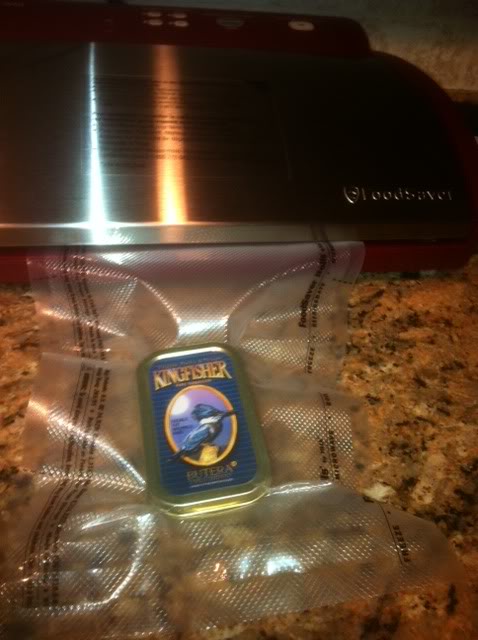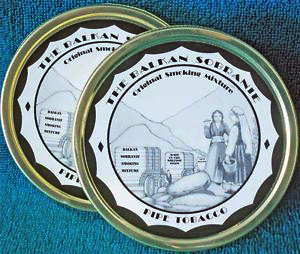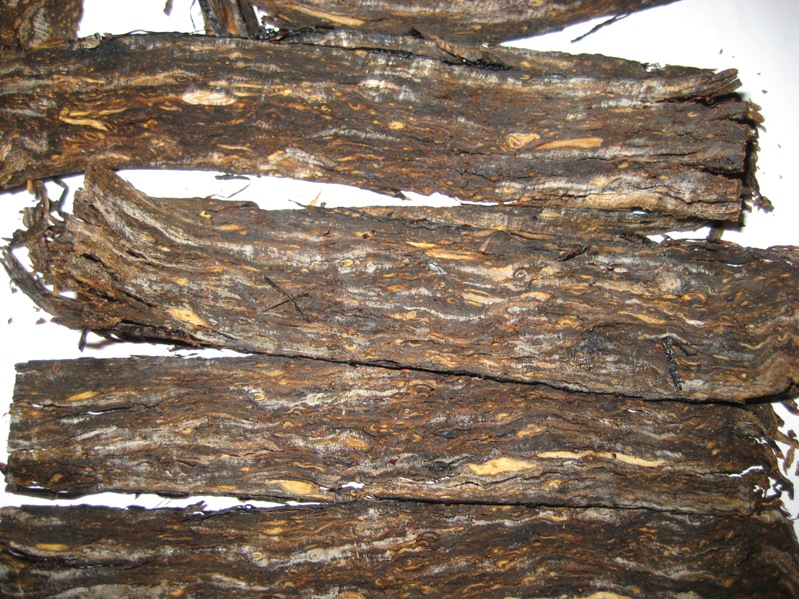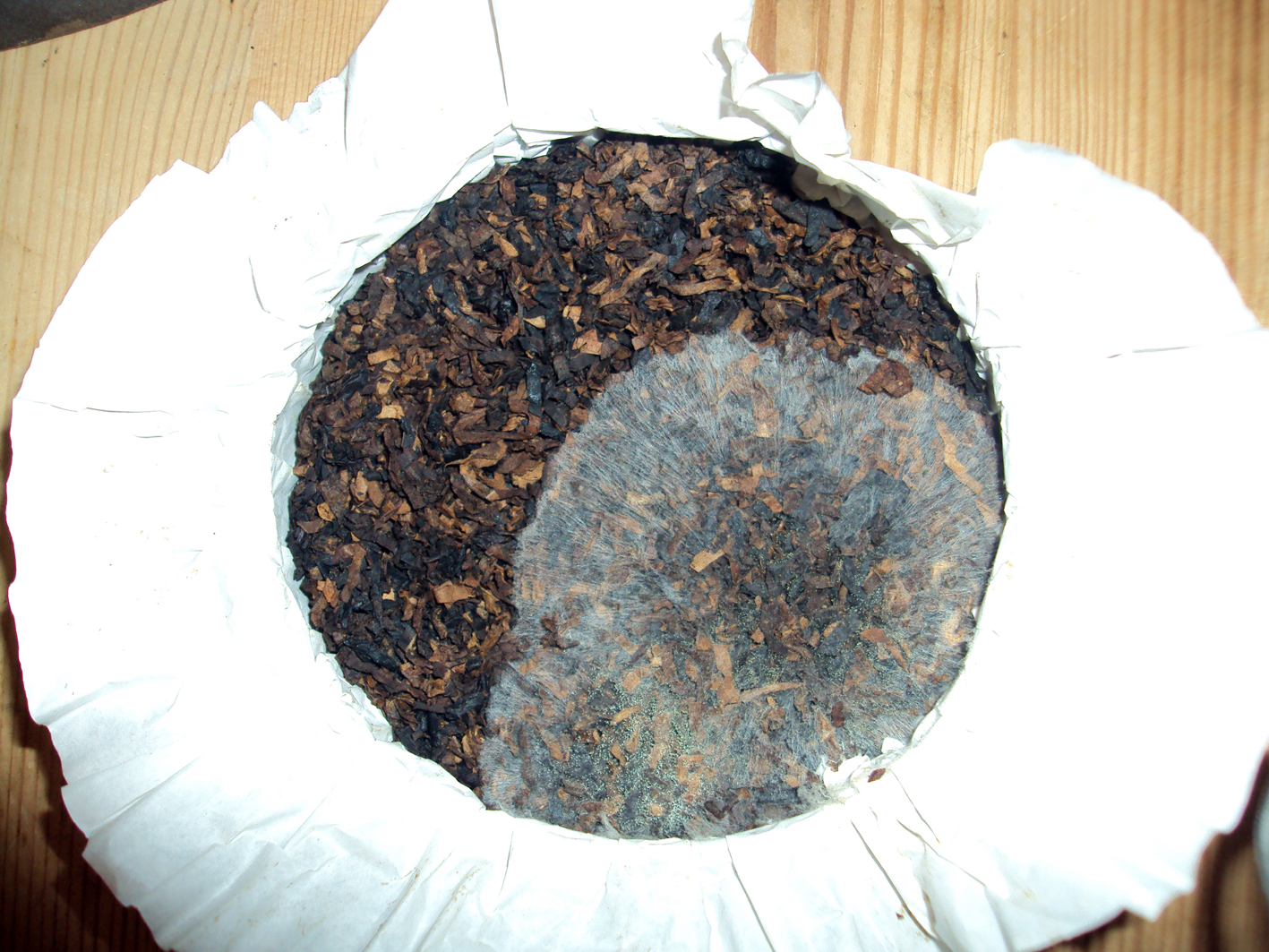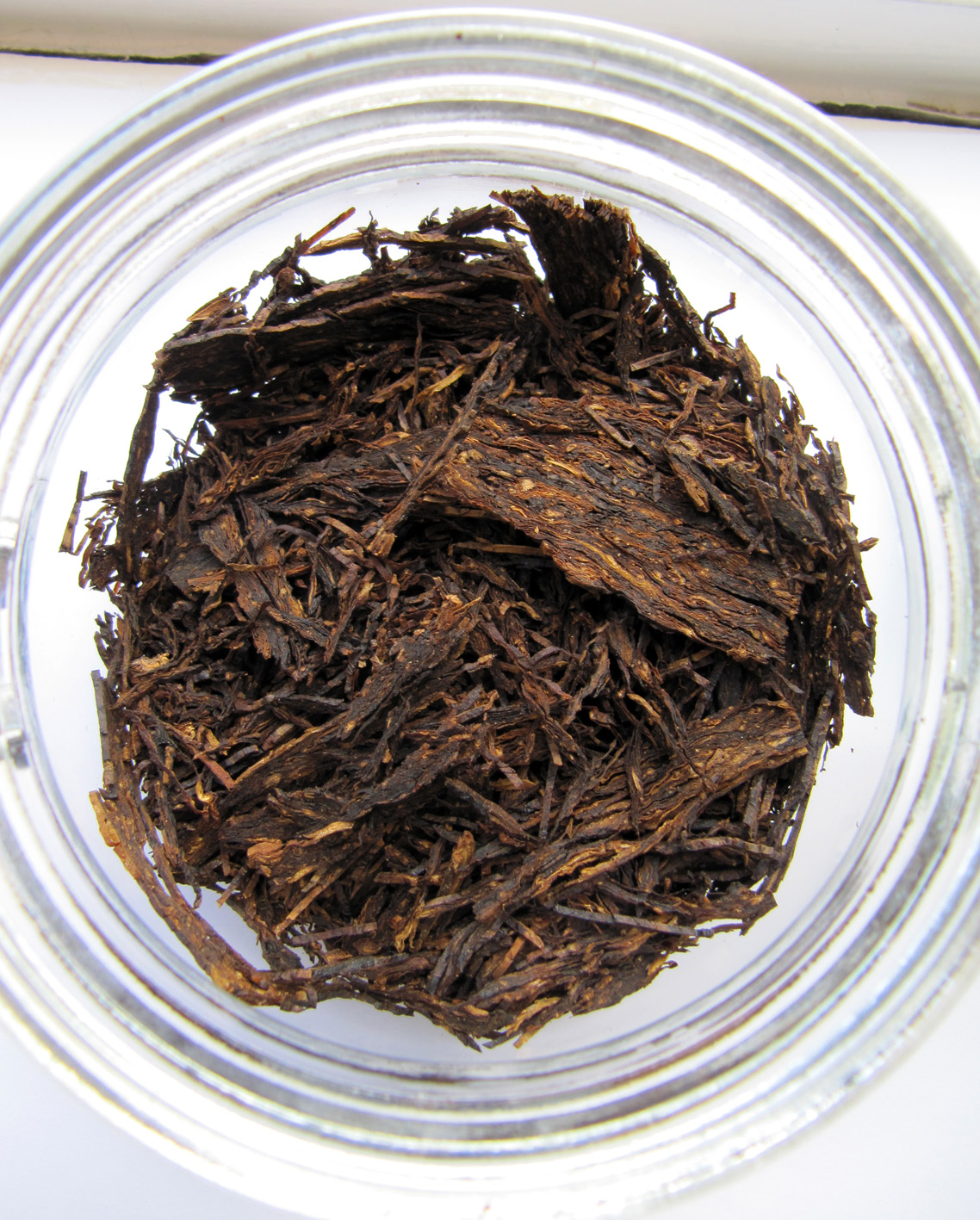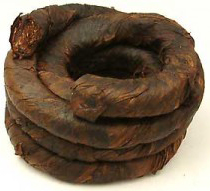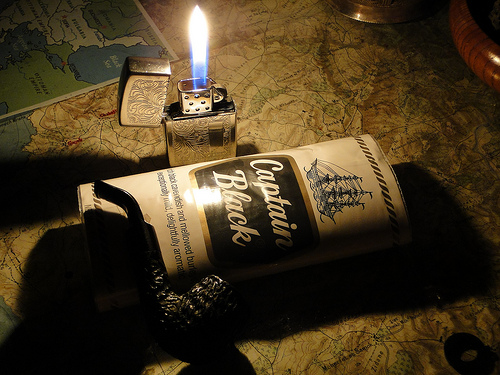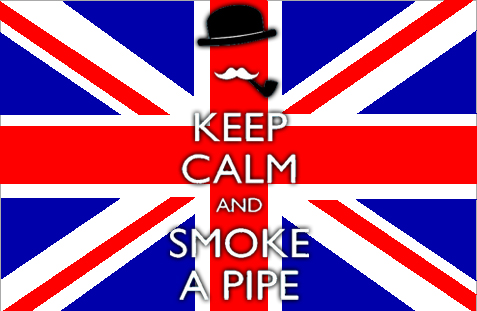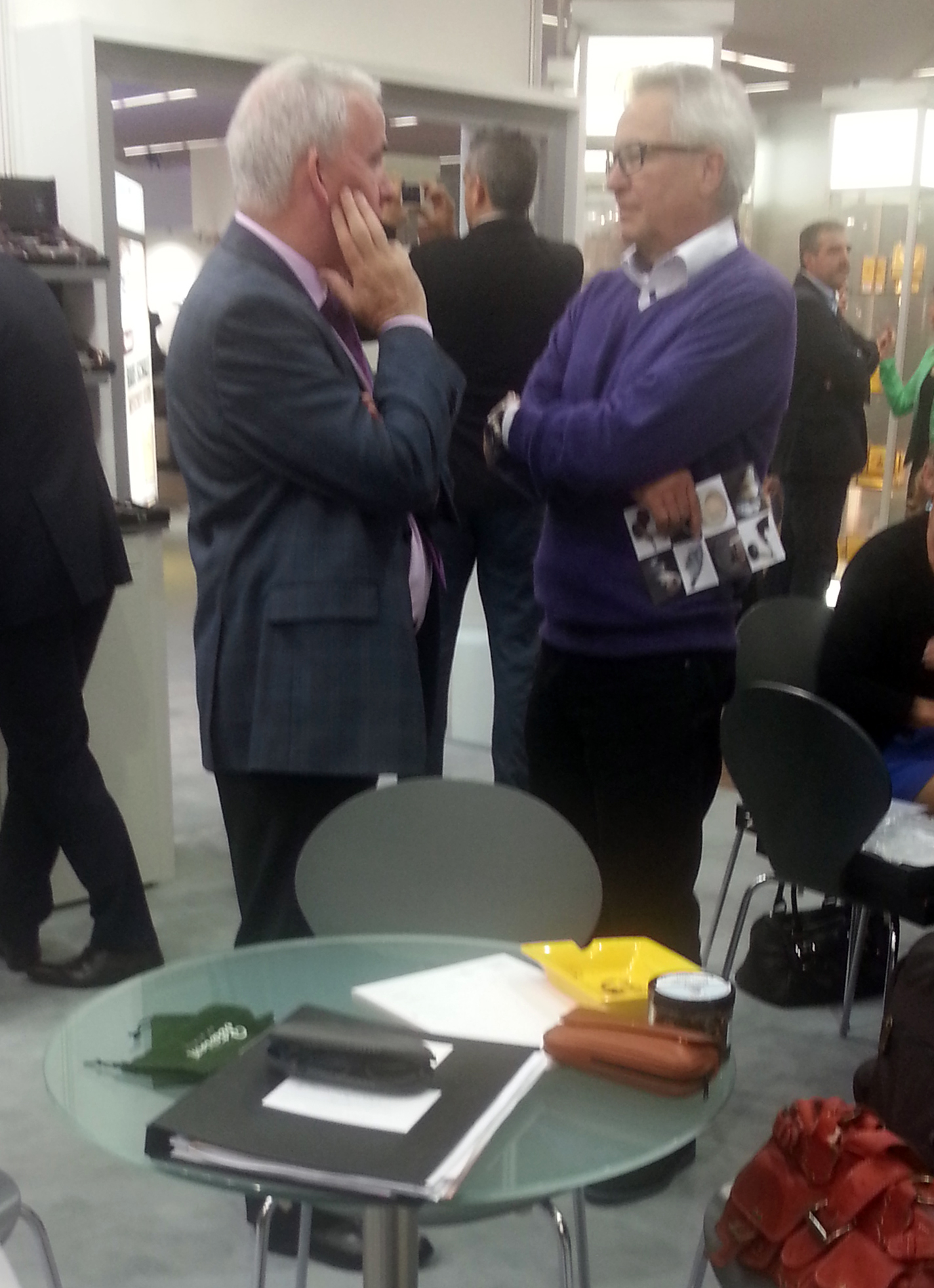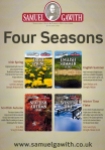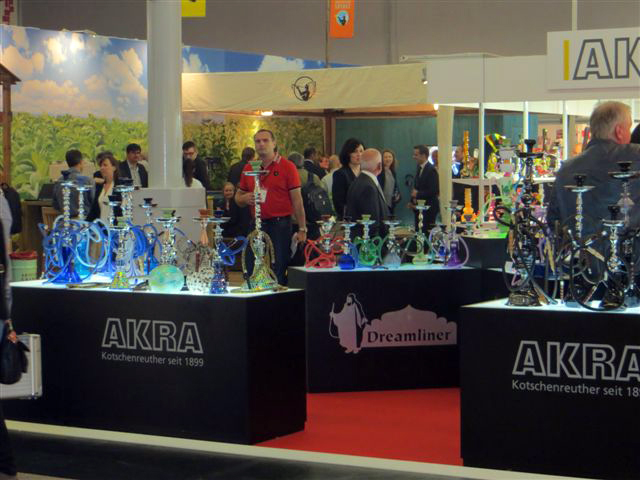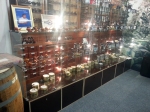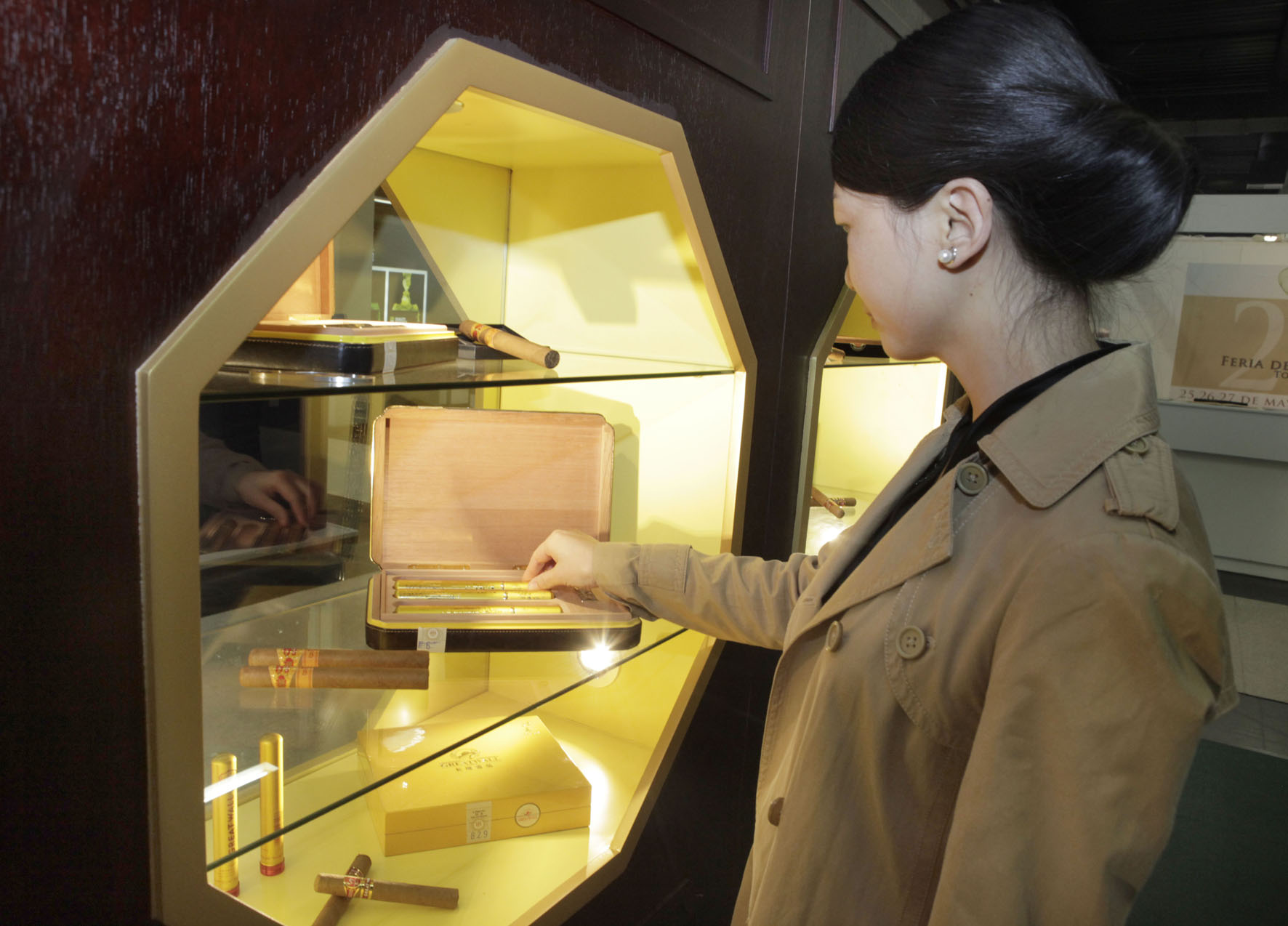Last year a dream came true for me, I got to visit the Inter-Tabac fair in Dortmund, Germany. For those of you who missed the blogpost I made of the visit; the Inter-Tabac is the leading and biggest trade fair of the world for tobacco products and smoking accessories. This year there were more than 400 exhibitors from 51 countries who presented themselves on an area of over 30.000 square metres! In 5 exhibition halls (1 more than last year) renowned companies from all over the world presented trends and innovative tobacco products. This includes cigars, cigarillos, cigarettes, E-cigarettes, E-pipes, smoking accessories, pipes, pipe tobacco, shop equipment and spirits. Unfortunately the fair is for retailers, not for consumers. Last year I was lucky, I got a ticket through an anonymous person. Well, that person was Fred, the Dutch importer of Mr. Brog and Country Pipes and also a member of the Dutch/Belgian Pipe Smokers forum. Now he yet again had a ticket for me and on top of that he was visiting the fair the same day as myself. A good thing because Rudi and Paul, with whom I went last year, preferred more privacy now despite the good times we all had. Apparently Rudi noticed that a big crew of consumers did not go well with the exhibitors, after all it is a fair meant for retailers. Luckily, for Fred my presence was no trouble at all.
On the sunny morning of September 19th I once again drove to the Westfalenhallen in Dortmund. Luckily there was no Stau (traffic jam) on the way so I arrived in time. When I walked to the main entrance (no anti-smoking nazis this time) I saw Paul and Rudi standing there. We all went inside and chatted a bit while I was texting Fred if he already had arrived. To my utter delight I saw signs that smoking was allowed inside the halls. This because last year I heard that that maybe was the final time inside smoking was still possible. Of course the exhibitors protested and I guess that helped. I mean, you go to biggest smoking trade fair of the world and you can’t smoke inside?? Suddenly I got a SMS from Fred that he was in hall 8 so I said goodbye to Rudi and Paul and went on my way.
Soon I found Fred at the big yellow Clipper stand, we greeted each other and started walking while chatting. Some exhibitors handed out presents and information so near a stand Fred got a bag pushed into his hands. He checked out the contents and saw something inside which looked like a small pipe. Fred likes new, innovative things that no one has so he headed back to the stand. The pipe appeared to be a so called “Midwakh“, an arab pipe. An enthusiastic salesman showed us how you fill the pipe with tobacco made in Oman and offered us a smoke. It tasted a bit like cigarette tobacco and the salesman explained that the pipe is meant for a quick enjoyable fix if you have little time. Even quicker than a cigarette. But I thought like (did not express it), well, you had your quick fix and then you still have to clean the pipe. So all by all it takes more time than a cigarette.. And besides that, being a full-blood Dutchman, the pipe looked to me like a hasish-pipe..
An interesting stand we passed by was that of Brebbia pipes. I already knew from Fred that they have no Dutch importer and he was asked a couple of times if he wanted that job. But it was too much work. Despite that Fred was hesitating if he should buy some pipes because we saw some really nice ones. What I love about the Italian pipe makers is that they have some kind of passion and fire in their eyes when they talk about their creations. Fred asked if he could buy low quantities and if they shipped to the Netherlands and with busy hand-gestures and thick Italians accents they said that was no problem at all. So who knows..
While we walked through the halls the appetite for a chair and some coffee arose with the both of us. “Let’s go to the stand of Dan Tobacco, we can get some coffee there” Fred said. Good idea! When we arrived I saw to my disappointment that master-blender Andreas Mund was not there. Last year he was present and we had a warm conversation. For me Andreas is the living soul of Dan Tobacco besides the old director Heiko Behrens who was present but looked a bit old and fragile.. Anyway, the charming daughter of Heiko presented us 3 new blends: Bulldog Roper’s Roundels, Salty Dogs and Choo Choo Train. The last one was so new and fresh that it could not be smoked yet. From what I could see and smell it is a light Virginia flake with a topping of chocolate and some kind of vanilla-butterscotch. My eye fell on the label of Bulldog Roper’s Roundels and Salty Dogs: Manufactured in the E.C. for Dan Tobacco Germany. Hmm.. The Roundels smelled and looked precisely like Peter Stokkebye’s Luxury Bullseye Flake and there are not many tobacco factories on Europe mainland that can make plugs like Salty Dogs. So my guess is they were made in a big factory in the North of Europe.. Choo Choo Train is fully made at Dan Tobacco. As it should be. While sipping the coffee I also asked the daughter of Heiko how the waterpipe tobacco business (see the blog of last year) went: most excellent.
 So our thirst was quenched but now our bellies grumbled. Last year I had lunch at the restaurant of the fair itself and it was expensive and baaaad.. Luckily Fred knew that outside was a stand where they sold grilled mega-burgers. It was easy to find because the fumes from the grill rose sky-high and the queue was long.. But it was 100% definitely worth the wait! A mouth-watering very tasty 20 cm. diameter (!) burger between a bun of the same size with sauce and salad was our reward.
So our thirst was quenched but now our bellies grumbled. Last year I had lunch at the restaurant of the fair itself and it was expensive and baaaad.. Luckily Fred knew that outside was a stand where they sold grilled mega-burgers. It was easy to find because the fumes from the grill rose sky-high and the queue was long.. But it was 100% definitely worth the wait! A mouth-watering very tasty 20 cm. diameter (!) burger between a bun of the same size with sauce and salad was our reward.
Back inside we passed by the stand of Mastro de Paja and saw the most exquisite pipes of the day. We just had to stand in awe and admire the displayed beauties. “For you just 10 dollars”, joked one of the salesmen who saw us drooling. Well, for that money I would have taken them all home! When we learned the real price we sadly understood that we would take none with us.. But the silverwork and innovative use of egg-shells in some pipes was very, very professional. And also here the fierce Italian enthusiasm for their products was hearth warming. If only I had the money..
One of the stands I definitely wanted to visit was that of MacBaren. Last year I had some trouble finding it (a stand within a stand) but now we easily marched to the small counter where the very friendly master-blender Per Jensen was just helping some clients. While waiting we looked at the range of MacBaren tobaccos in small sample jars and it occurred to me that I was missing one, their latest creation: HH Latakia Flake. So I asked Mr. Jensen (when he was available) where it was. Quickly he went to the back, grabbed a tin of it from a cabinet and opened it. Fred and I approvingly sniffed the delicious smelling flakes inside. Earlier this year I smoked a small sample of the HH Latakia Flake and found it to be pretty tasty and smooth. But the German health-labels on the tin puzzled me somewhat. Was it already available in Germany? Fred said that I have blog about pipe-smoking. Mr. Jensen nodded approvingly and replied that if I mentioned that HH Latakia Flake is going to be available in Germany in the spring of 2015 he was going to give me the tin. My blog is non-commercial but this opportunity I would not let slip through. So you see Mr. Jensen? I said it. I also had a question about one of my personal favourites, HH Vintage Syrian. As you perhaps know it is one of the last blends with the original Syrian Latakia and I was wondering how long the stock of MacBaren would last. Mr. Jensen very honestly answered that he guessed that in about 7 or 8 years they would run out of the Syrian dark leaf. So grab your tins while you still can!
We also had to go to the big stand of the Scandinavian Tobacco Group where pipe-brands like Winslow, Peterson, Dunhill and Butz Choquin are shown. Of course the main attraction is Poul Winslow himself and.. He was not present when we were there, he was walking around the fair. Oooh damn.. So we just looked around and marvelled at the beauty of the Winslow and Dunhill pipes. Two totally different brands but each beautiful in their own right. What was not so beautiful were some pipes by Butz Choquin. They had a couple of bright yellow, almost fluorescent ones. Pipes covered with jeans-fabric and dark blue ones with yellow spots. Let’s just say I expected the French to have more of a good taste.
The Italians surely had a better taste on the fair as we noticed when we shuffled beside the stands of Lorenzo, L’Anatra, Ser Jacopo and Savinelli. I am even surprised that I don’t own an Italian pipe.. Hmm.. When we turned around the corner we saw the combined stand of pipe-maker Ian Walker and tobacco institute Samuel Gawith. The Gawith guys were busy and Ian Walker did not recognize me right away until I put the forum prince under his nose that he made last year. “Aaahh! I already thought it was you! Pipe nr. 13 right?” He has a good memory for sure! I asked how business went and he enthusiastic told me that he already had 80 orders for pipes that morning! Wow! He also was so kind to get the latest offering from his neighbours for me so I could enjoy it: Bothy Flake. Apparently the smoke summoned the physical body of Sergeant Matron of the Kearvaig Pipe Club, one of the originators of Bothy Flake. I did not recognize him because I only knew him as a zombie. I said who I was and I was glad to hear he is a regular reader of my blog. I told him I loved the magazines he makes for the pipe club with crazy pictures of wasted Scotchmen in kilts who show their bare asses. He countered with “Well, I saw the blogpost with you guys wearing those strange coats and you say we are crazy??” Lovely chap! If I ever get to Scotland I will surely try to survive an evening in a bothy with the KPC members and copious amounts of tobacco and whisky.
Talking about bare asses, sex still sells at the Inter Tabac Fair. But not with the “old-fashioned” tobacco products like cigarettes, cigars and pipes/pipe tobacco. No, the hordes of attractive scarcely clad young ladies were present at trendy water-pipe (tobacco) and E-cigarette (liquid) stands. And it works! Fred and I walked by a stand where they sold some espresso water-pipe stuff and a good looking girl asked if we wanted to try some. Ehrrrr ok! The girl explained with a sly smile that we really had to suck hard on the pipes to get them going. Owkeeej.. I have some water-pipe experience from my visits to Cairo so I was fuming (and coughing) away in no time. When we were done we passed another stand with a girl who had, let’s say, two major unique selling points. She made some kind of water-pipe cocktail with real fruit for us and I have no idea how she did it because I was trying to look at (and photograph) something else.. I am a bad man, I know. In front of an E-cigarette producer stand were a couple of girls active with handing out goody-bags. I snapped a picture from the scene while talking to Fred. One of the girls heard me and said in Dutch “Oooh, you are Dutch! If you like you can let a photo be made with me and my girlfriend”. Ehrrrr ok! She softly pushed herself against me and another stunning girl with even less clothing joined us. Fred had a big grin on his face when he took the picture.
To cool off we went to the stand of German pipe-producer Vauen. Our eyes immediately went to a black diamond shaped pipe fittingly called “Diamond“. I didn’t and don’t know what to think of the shape. Vauen are surely thinking out of the box with this one. What I did not like were the facts that the pipe was pretty heavy because of the used plastic and the not so tight fit of the mouthpiece. I rather have Vauen design some more shapes for their magnificent Auenland-series. They also had a new tobacco, “English Blend & Vanilla“. I looked at it, smelled it and told a salesman that it reminded me very, very much of Sillem’s Black. He did not know that one..
It was getting late and I just had one more thing to do at the fair: speak with the Gawith guys. First of all I wanted to compliment them with Bothy Flake. I smoked a large sample before the fair (thanks to Huub!) and I can say it is one of best tobaccos Samuel Gawith brought out in the last couple of years. Second I asked about their new concept: Blend it. Which means that you can buy tins with flakes which also contain a small bag containing some ribbon cut blending tobacco. That way you can mix your own creation. I hope the concept will take off and be successful.
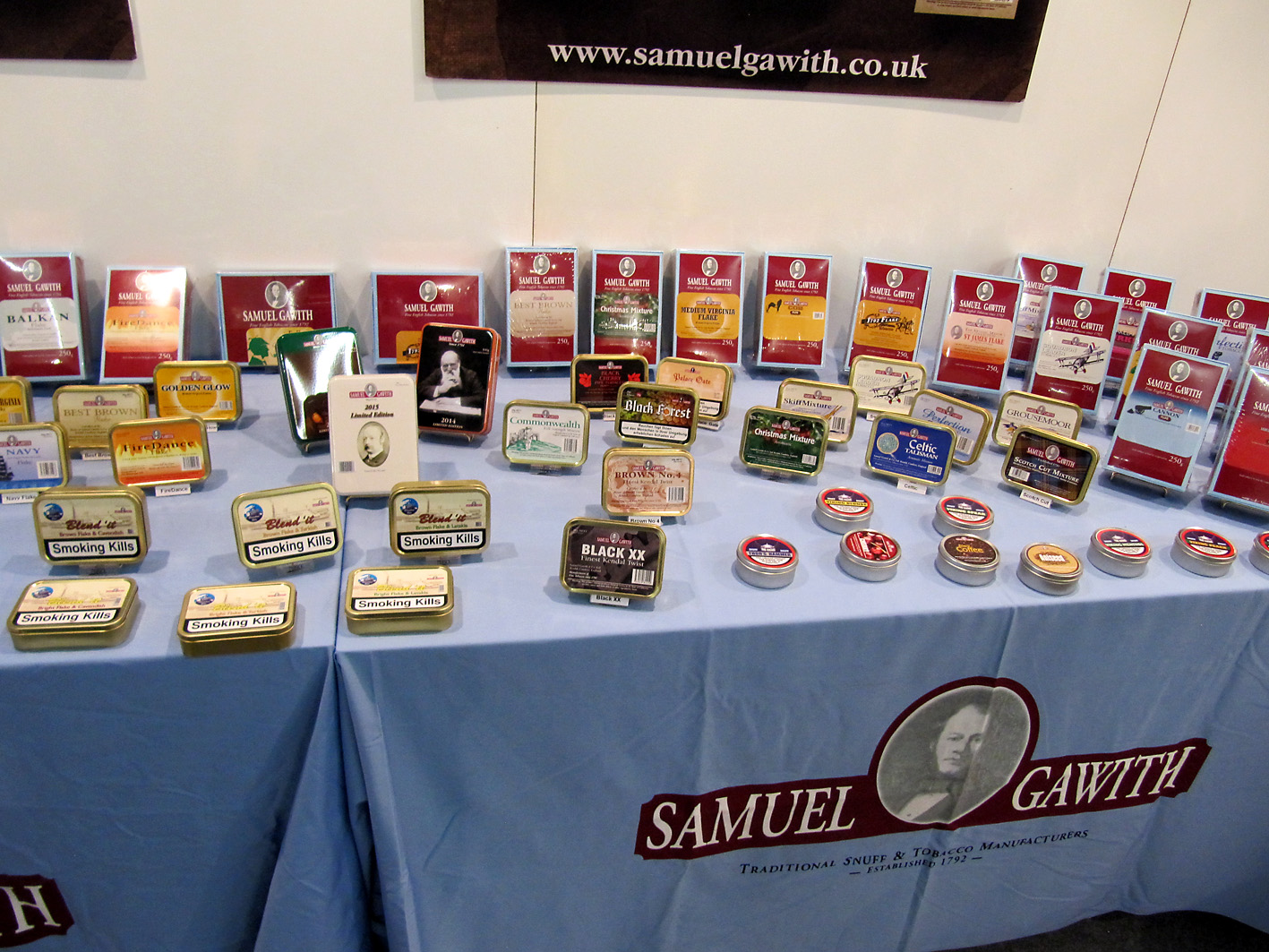 The main reason I sat there was that I perhaps had some business for them. Last year I had some forum tobaccos made in cooperation with Hans Wiedemann from HU Tobacco and a German tobacco factory. In about a good year from now I am thinking about creating one new forum tobacco together with Samuel Gawith. I asked them if they liked the idea and they did! From their side I can expect full cooperation. But there are other things I must take account of first.. Will the Dutch/Belgian forum once more order a lot of tins? How will the tobacco route go, through The Netherlands or Belgium? We will see. The last thing I wanted from the Gawith guys was some Bothy Flake, but unfortunately they brought not much with them. Sergeant Matron (who was sitting beside me) took a pity on me with my pleads for a sample and he put his own tin of Bothy Flake in my bag. Thanks sarge!
The main reason I sat there was that I perhaps had some business for them. Last year I had some forum tobaccos made in cooperation with Hans Wiedemann from HU Tobacco and a German tobacco factory. In about a good year from now I am thinking about creating one new forum tobacco together with Samuel Gawith. I asked them if they liked the idea and they did! From their side I can expect full cooperation. But there are other things I must take account of first.. Will the Dutch/Belgian forum once more order a lot of tins? How will the tobacco route go, through The Netherlands or Belgium? We will see. The last thing I wanted from the Gawith guys was some Bothy Flake, but unfortunately they brought not much with them. Sergeant Matron (who was sitting beside me) took a pity on me with my pleads for a sample and he put his own tin of Bothy Flake in my bag. Thanks sarge!
With just 15 minutes to go before the fair closed Fred and I left the building. We were saying to each other that the water-pipe and especially the E-cigarette business was booming. “Maybe next year all the halls will contain that stuff” Fred said with a wry smile.. He might be right, in some halls there were so many Japanese/Chinese stands with E-cigarettes and liquids that I felt like walking through a shopping street in Tokyo/Shanghai. At least of one thing we can be certain next year, that the big truck of Heinrichs will be standing in front of the Inter-Tabac Fair.



